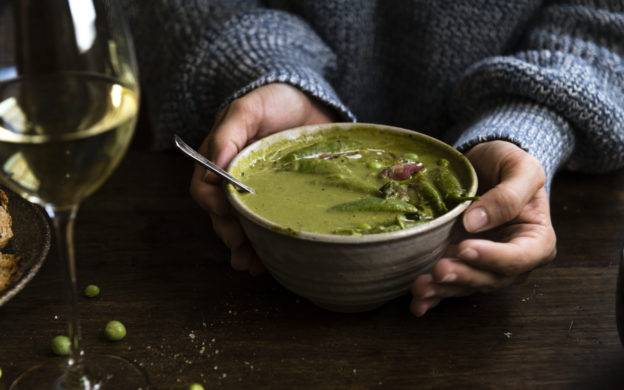Swedish food is as varied as the country’s landscape is diverse. Sweden has indigenous reindeer dishes, wild berry soups, and outdoor seafood parties where guests consume lots (and lots) of snaps.
Sweden is also credited with inventing the cinnamon bun (need we say more?), the coffee break known as fika and, infamously, the smelliest fish in the world.
To answer all your Swedish food-related questions, here’s your guide to Swedish cuisine. These are the Swedish dishes to trty, drinks to imbibe, ways to satisfy a sweet tooth, some of our favorite cookbooks, and the best Swedish holiday food.

|

|

|

|
|

|

|

|

|
Country |
Sweden |
What is Sweden’s national dish? |
Sweden doesn’t have an official national dish, but many Swedes consider meatballs and lingonberries to be the national fare. |
Swedish Staple foods |
Traditional Swedish food is made up of many dishes often comprising of fish, wild game, rutabaga, potatoes, knäckebröd, berries, butter, and cream |
What food is Sweden known for? |
Sweden’s culinary claim to fame is meatballs and lingonberries, fika, surströmming, smörgåsbord, cinnamon buns |
Number of Michelin stars in Sweden? |
17 (as of 2021) |
A brief history of Swedish Food
The concept of a national cuisine is a relatively new one in Sweden, and one that has come to reflect a meeting of traditions, regions, and cultures.
Prior to the Agricultural Revolution, Swedes depended on what was locally available. Thus, where one lived dictated which meats, vegetables, and grains would be consumed. This is how reindeer and moose became protein sources of the Arctic Sámi while southern Viking settlements relied on smaller game like grouse and wild boar.
Fish and root vegetables, like turnips and rutabaga, and hard flat breads from barley or rye were, generally speaking, core components of every Swedish diet.
As was the case across Scandinavia, food production and preservation occurred during the short summer months; therefore foodstuffs that could be cured, buried, fermented, or dried feature heavily in traditional Swedish cuisine.
This began to change in the mid-1800s with agricultural industrialization. The ability to mechanize crop production, storage, and movement shifted Sweden’s food culture away from seasonal practices and regional traditions. Village farms were consolidated, new technkotbolologies were introduced, families moved into cities, and Swedish products were mixed with imported raw goods or no longer produced in-country at all.
Around this time, the potato became central to the Swedish plate (and still is), relegating bread to second-class sandwich status. Simultaneously, new milling techniques injected softer breads and pastries into the Swedish market, and baking styles from other parts of Europe became accessible and mainstream.
The wood-burning stove further revolutionized how the Swedes ate by allowing the average household to roast, fry, or stew whatever it wanted. Previously, almost all foods were boiled.
In fact, many of the Swedish dishes that we’ve now come to know took shape in the late 19th and early 20th centuries.
Over the last few decades, mainstream Swedish cuisine has undergone another transformation following the creation of the New Nordic Manifesto. The “New Nordic Kitchen” – a culinary and cultural movement across the Nordic countries – has revived, reclaimed, and celebrated many of the traditional food practices abandoned during industrialization.
|
|
Traditional Swedish food
Gravad lax
Gravad lax, also called gravalax, is prepared by curing salmon in a solution of salt, dill, and sugar. Traditionally, Nordic fisherman would ferment the fish slightly underground, which is how the popular dish earned the name “gräva” – it means to dig.
In Sweden, you’ll find gravad lax thinly sliced and served with a vinegary hovmästarsås mustard sauce. Along with pickled sill (herring), it’s the centerpiece of every Swedish smörgåsbord (buffet).
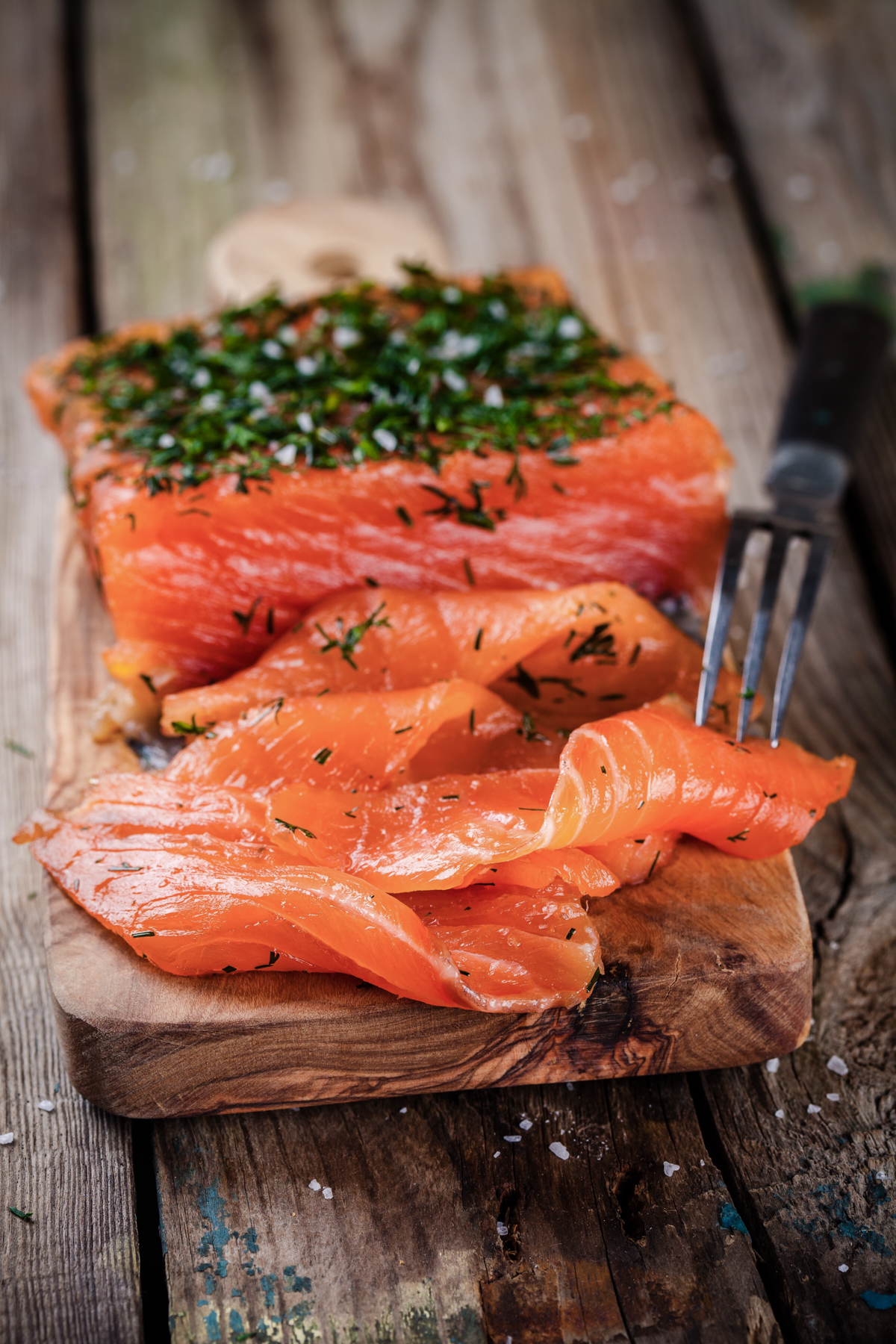 |
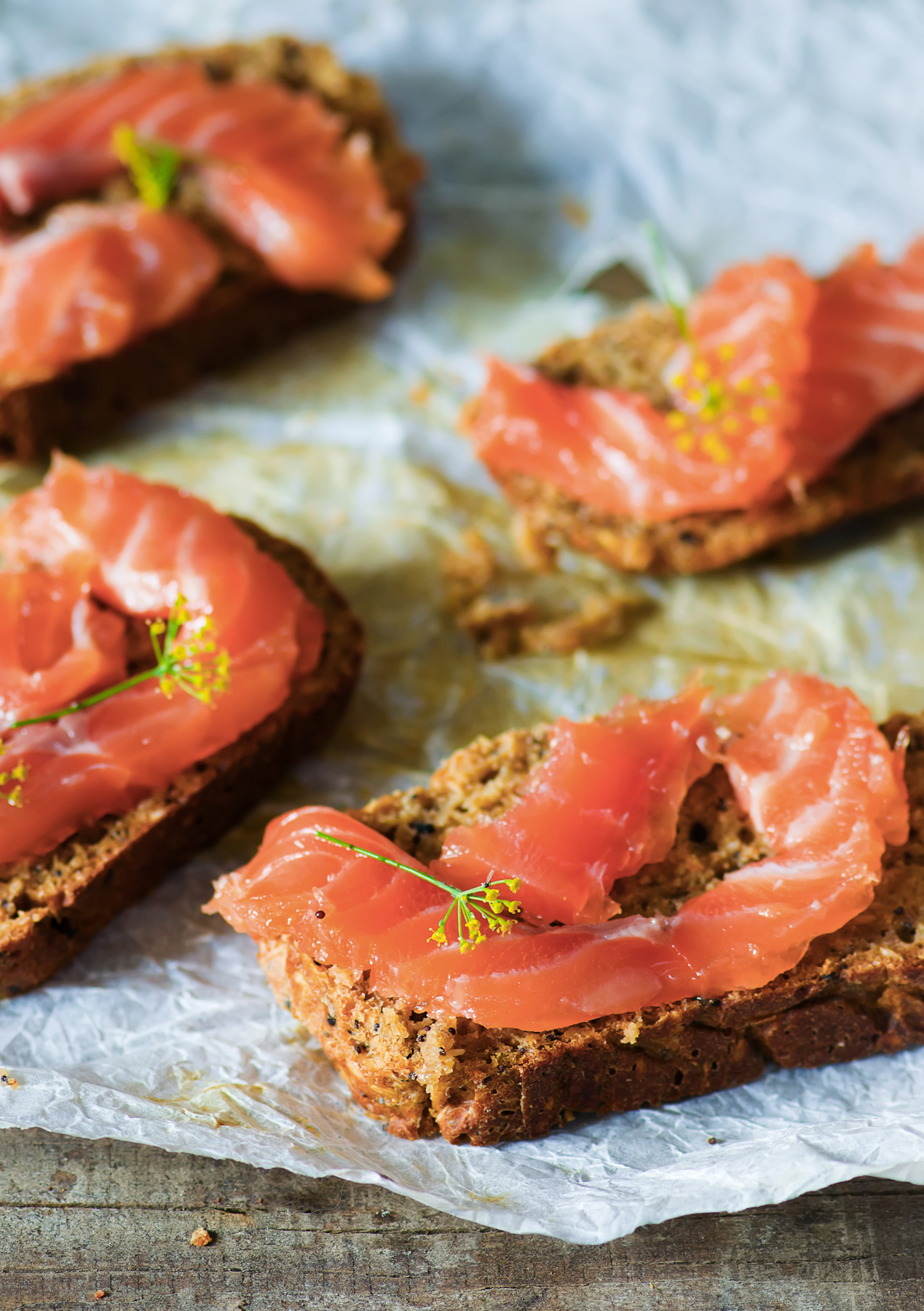 |
Köttbullar och lingonbär
Thanks to the ready-to-assemble furniture giant IKEA, Swedish meatballs and lingonberries (köttbullar och lingonbär) have become a household name.
Köttbullar are a blend of minced beef, egg, milk, and bread. The mix is rolled into small balls, fried in butter, and bathed in brown gravy. It’s a classic comfort food that somehow tastes even better in Sweden. The complete meal comes with boiled potatoes to soak up the gravy.
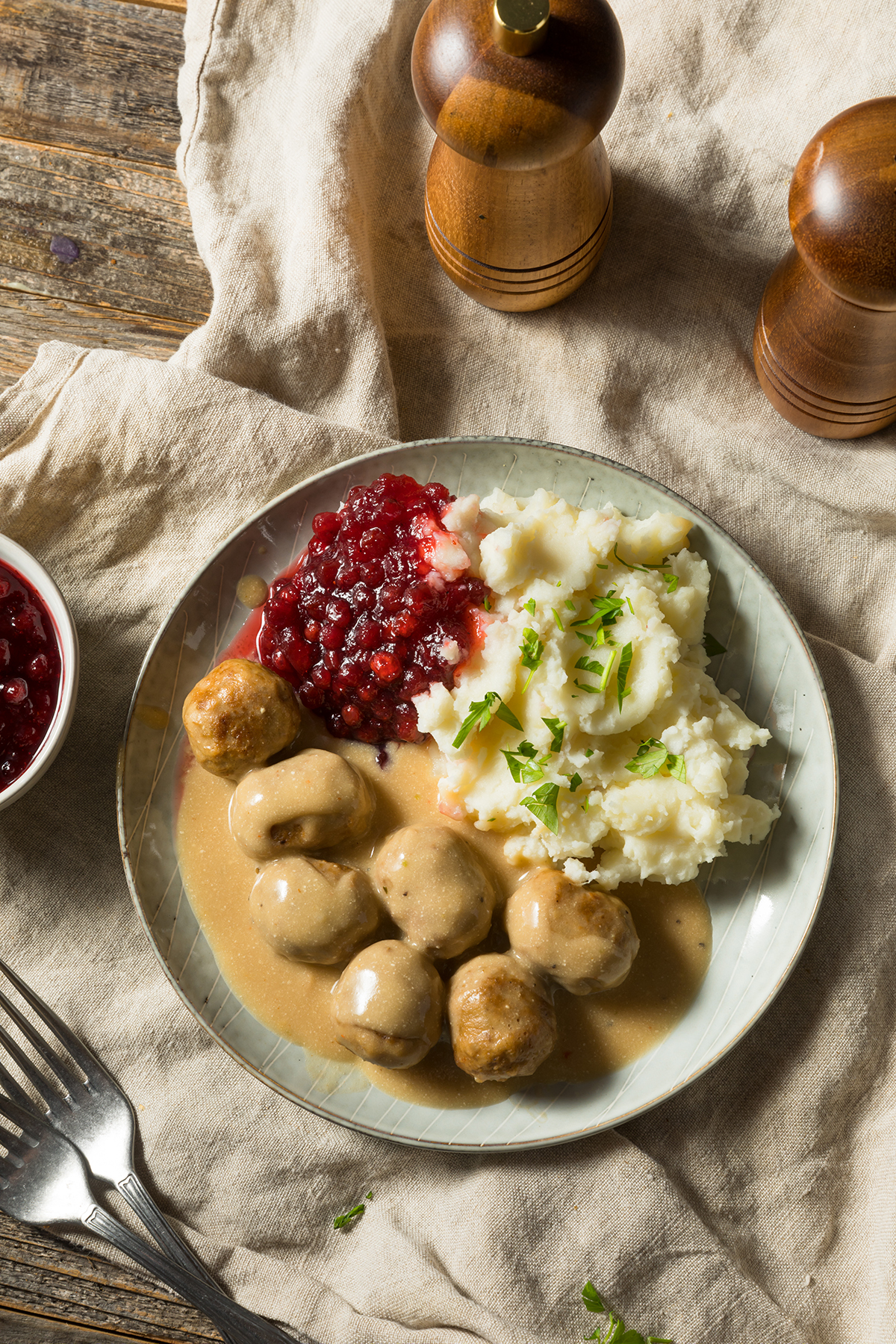 |
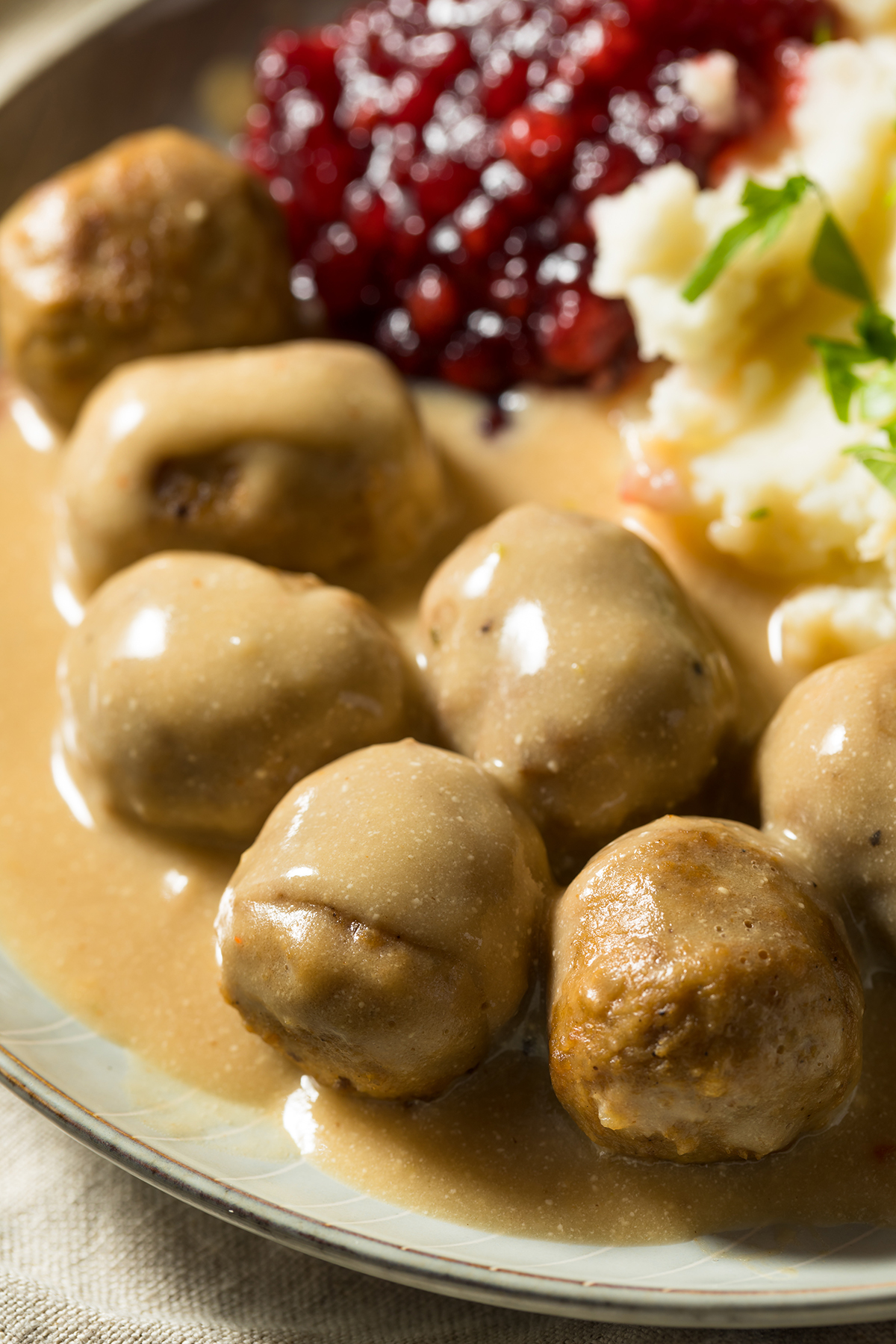 |
|
|
Lingonberry jam
Lingonberry jam accompanies a wide variety of Swedish dishes, from meatballs and black pudding (blodpudding), to pancakes and porridge. Lingonberries have a similar taste to cranberries but are comparatively more sweet and less sour than cranberries.
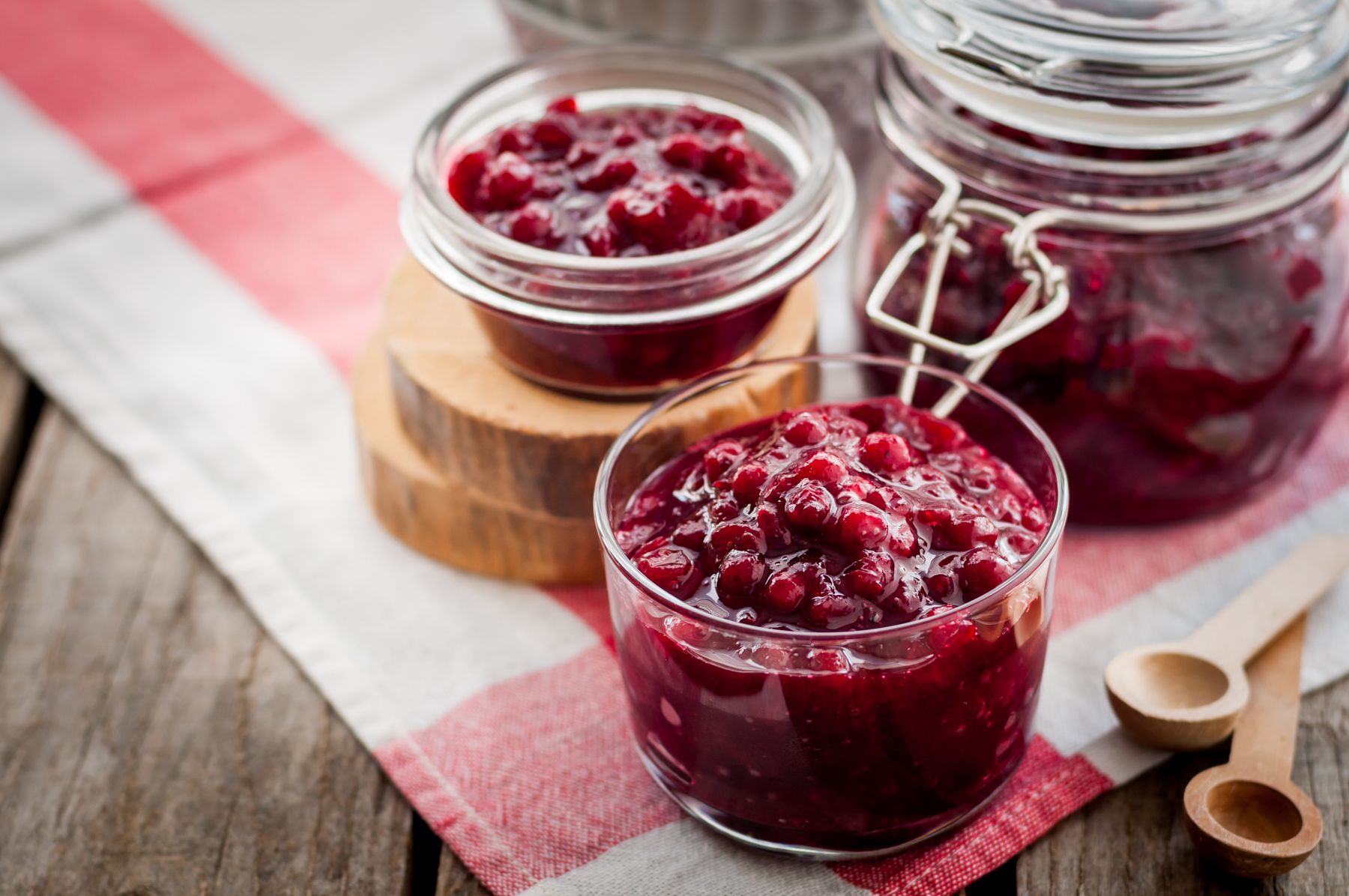
|
|
|
|
|
|
If you would like to buy lingonberry jam in the UK, you can do so here. If you would like to buy lingonberry jam in the USA, you can do so here.
Ärtsoppa
This filling golden soup made from dried peas, root vegetables, ham and spices is known as Swedish husmanskost – a “home cooked” meal that tastes like something Grandma would make.
Ärtsoppa (yellow pea soup) has been around since the 13th century and is usually eaten on Thursdays with pancakes, jam and cream for dessert.
It’s believed that this custom dates back to the Middle Ages, when Swedes would partake in the Christian tradition of meat fasting on Fridays.
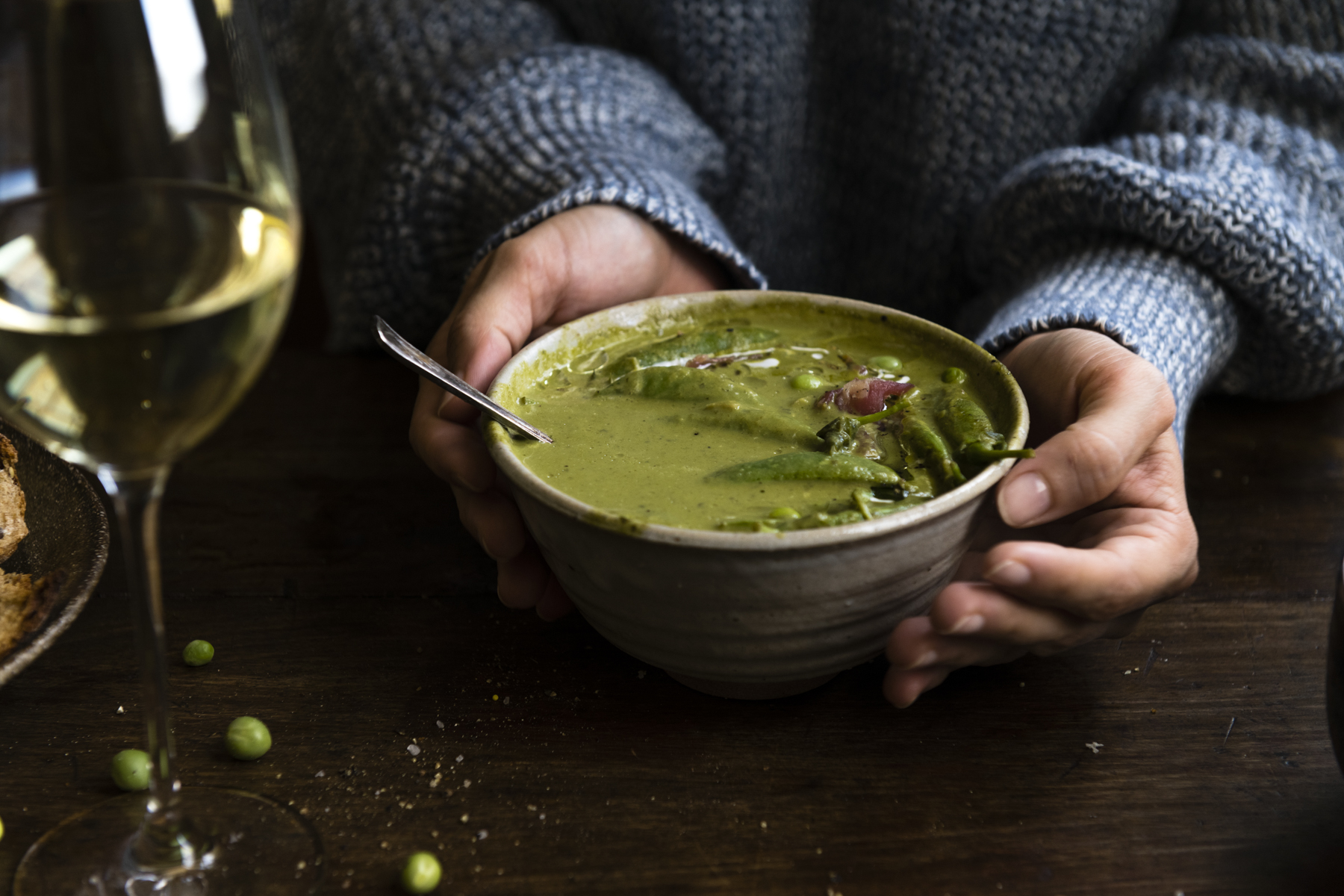
Pickled herring
No Swedish smorgasbord (buffet) would be complete without sill (pickled herring).
Pickling originally became popular across Scandinavia during the Middle Ages as a way to preserve food. Because herring was abundant in the Baltic and North Seas, it became a staple food across the region and remains so, particularly in Sweden.
|
|
|
|
|
|
Raggmunk
A beloved, crispy potato pancake; you’ll typically see raggmunk around the winter months.
It’s topped with salted pork and sweetened lingonberries.

Rårakor
Rårakor is raggmunk’s smaller, more delicate cousin. It’s a potato fritter served with savory toppings like caviar, crème fraîche, onions, and chives.
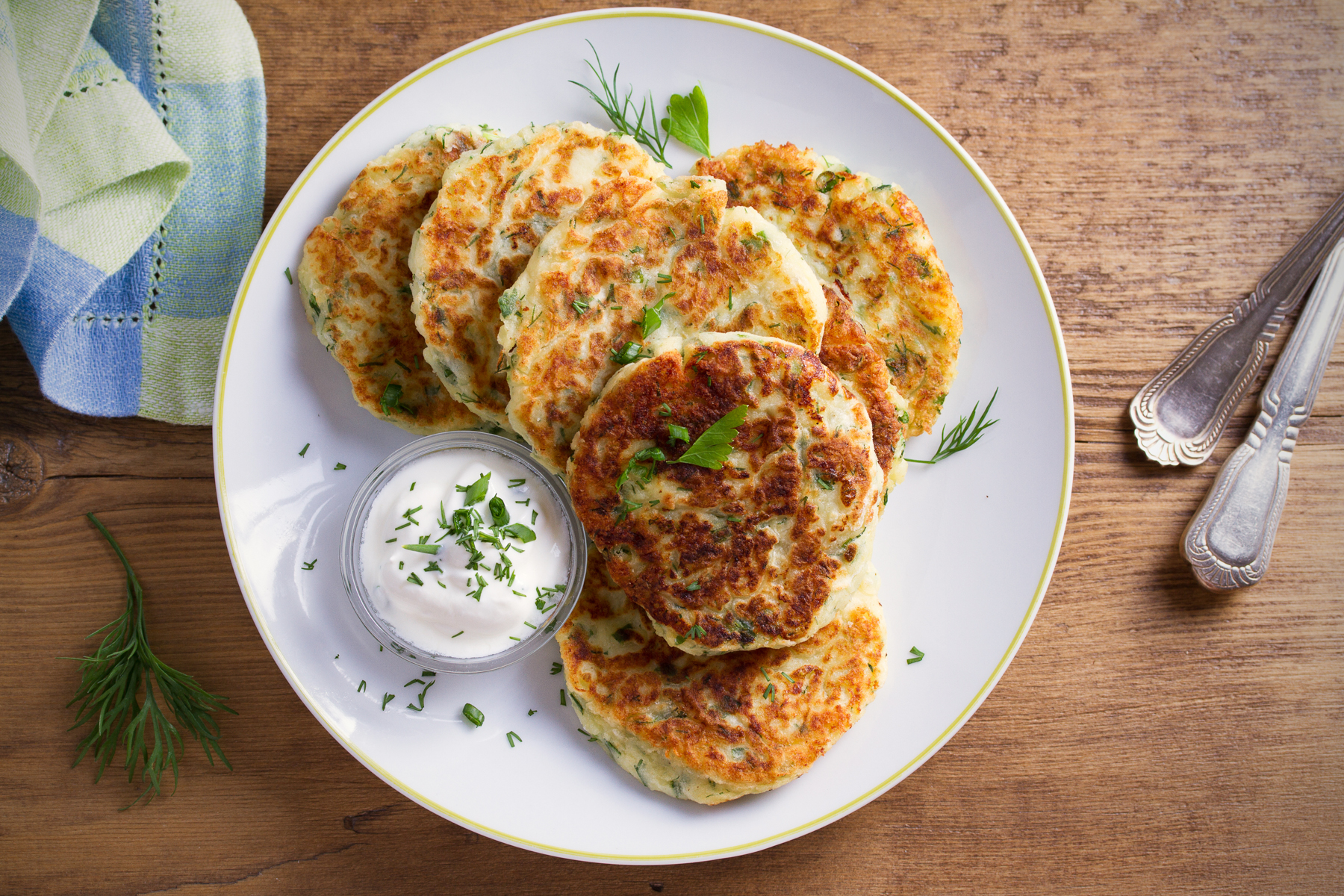
Knäckebröd
Knäckebröd (crispbread) is a nutritional grain staple that’s been in Swedish pantries for hundreds of years. It’s a leavened hard bread that comes in a variety of shapes and sizes, as well as cereals, seasonings, and toppings.
In the olden days, knäckebröd was made exclusively from rye, and baked with a hole so that it could be stored on sticks above the oven.
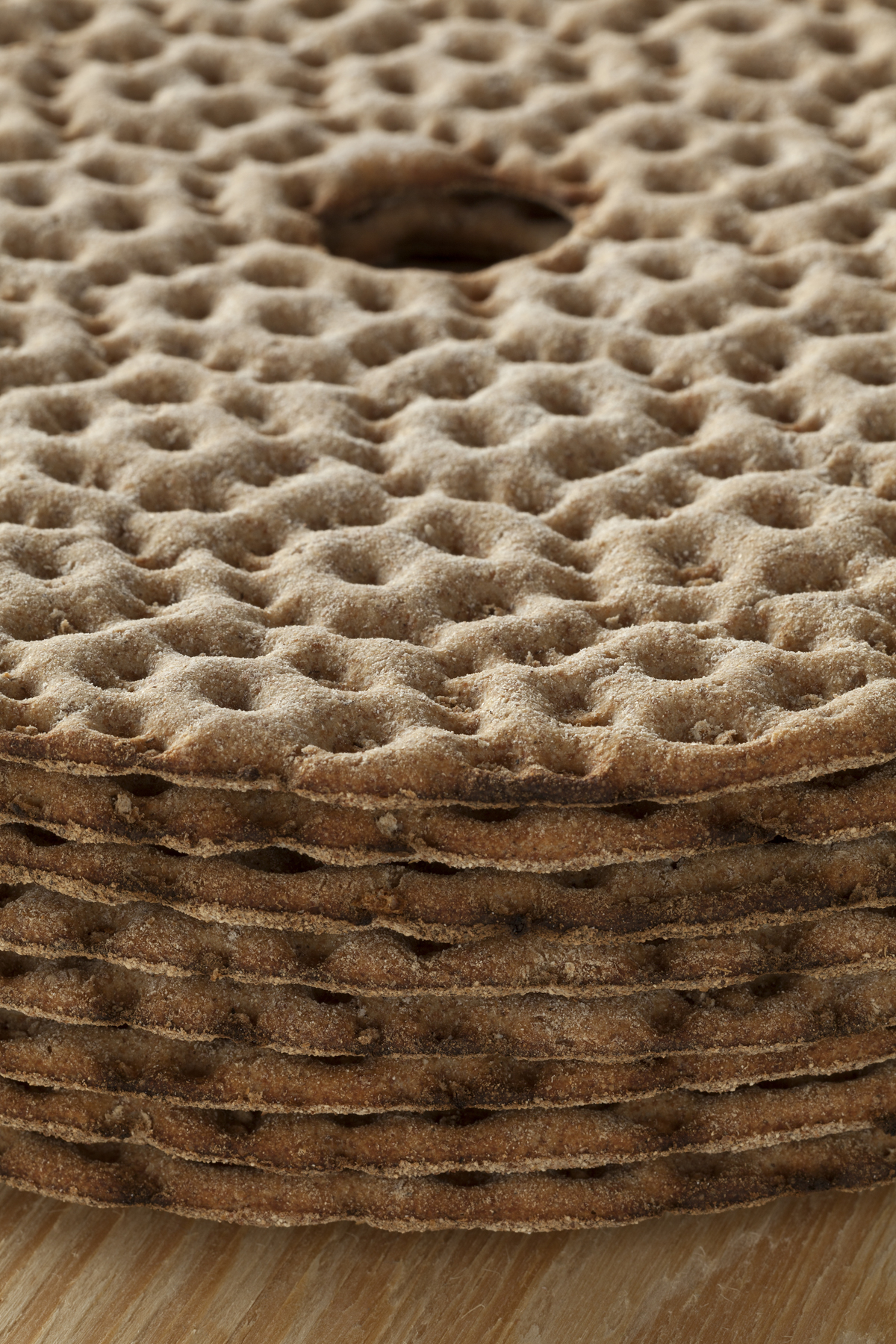 |
 |
Crayfish
High on your list of ‘to-dos’ in August and September should be attending a Swedish crayfish party, called a kräftskiva.
These outdoor, all-you-can-peel-and-eat crustaceous fests include drinking songs, hats and lots of aquavit.
But, worry not! Even if you’re unable to secure an annual kräftskiva invite, you can still buy the crayfish from a local fishmonger and have your own festivities at home.

Renskav
An indigenous reindeer dish that was once exclusive to the Sámi people, renskav has become a winter favorite across Sweden. The Sámi make it with frozen reindeer meat that’s been buried deep in the ground.
The meat is then thinly shaved, as needed, and fried with mushrooms over an open fire. The modified-Swedish version still uses shaved reindeer meat but cooks it with cream, onions, potatoes and, of course, lingonberries.

Surströmming
The Surströmminging/” title=”Everything You Need to Know about Swedish Surströmming” rel=”noopener” target=”_blank”>notorious Swedish delicacy famous for its pungent smell; surströmming is Baltic herring that’s been fermented almost to the point of rotten. Given its odor, there is a right way and many wrong ways to open a can.
Swedes don’t eat it straight from the can; that’s just YouTube hype. They filet it and wrap it in a buttered flatbread (tunnbröd) with almond potatoes, diced onion, and crème fraiche.
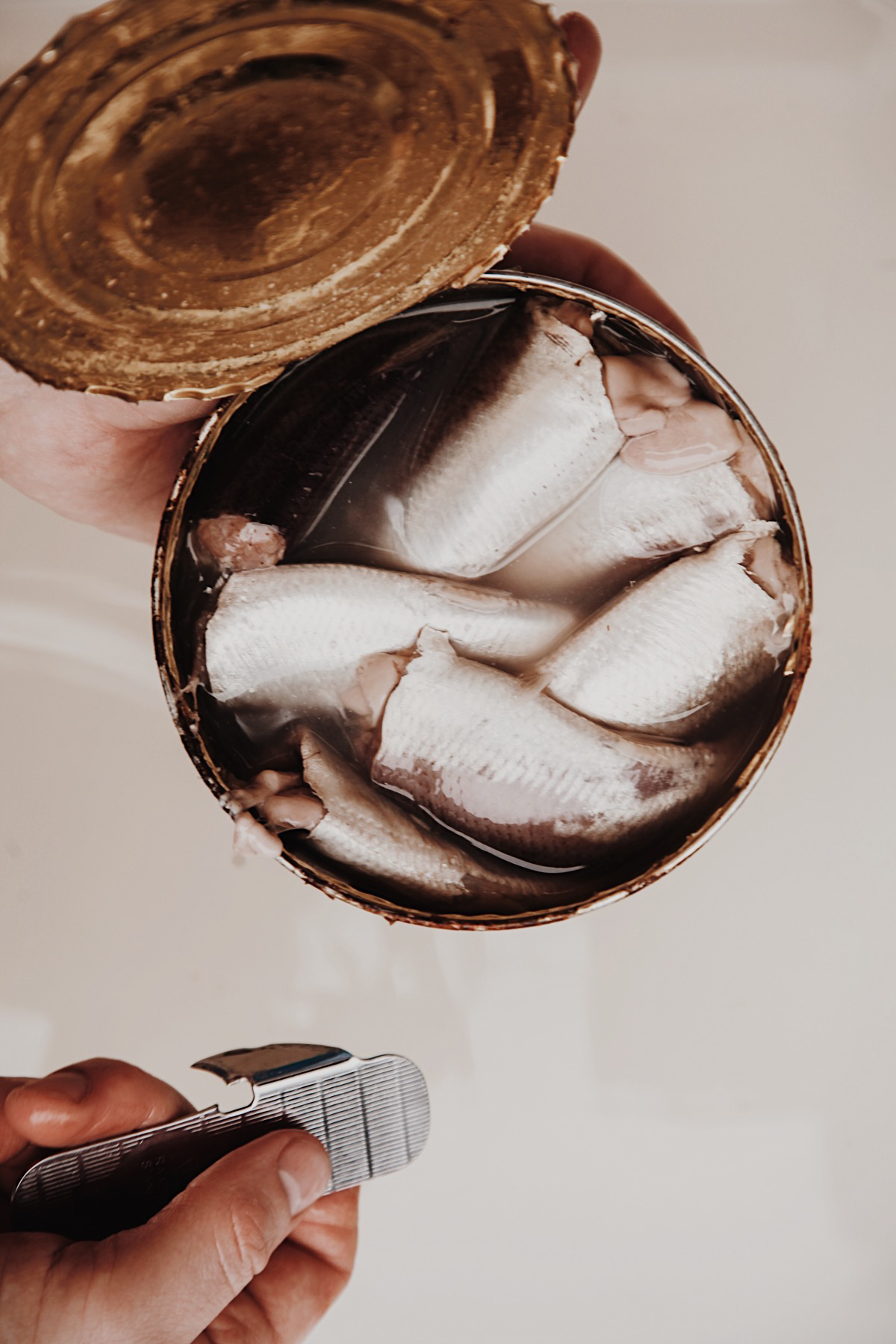 |
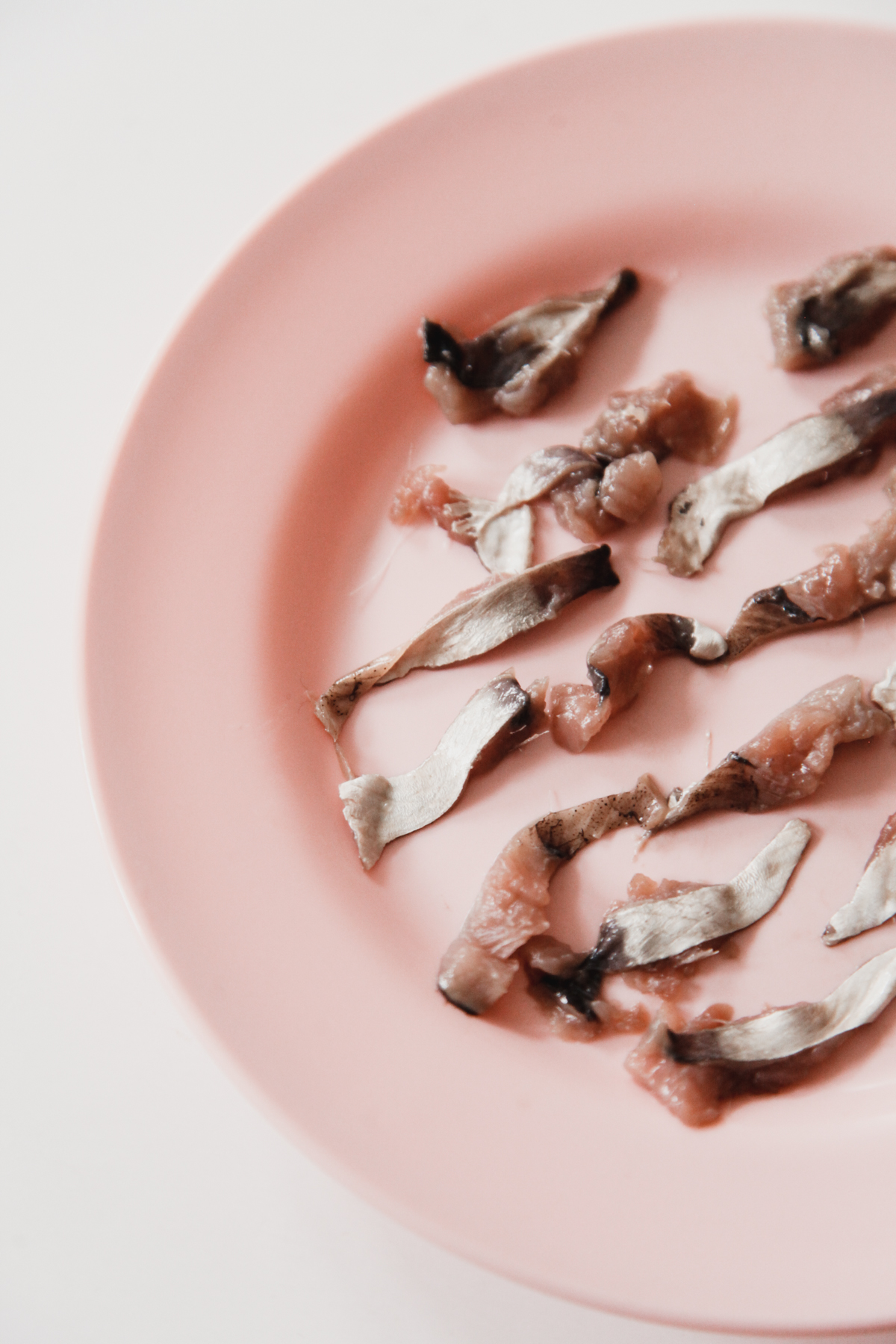 |
Smörgåstårta
Smörgåstårta is a cold “cake” is layers of seafood, cold cuts, eggs, bread and mayonnaise. You won’t find it in restaurants; it’s only served at special occasions.

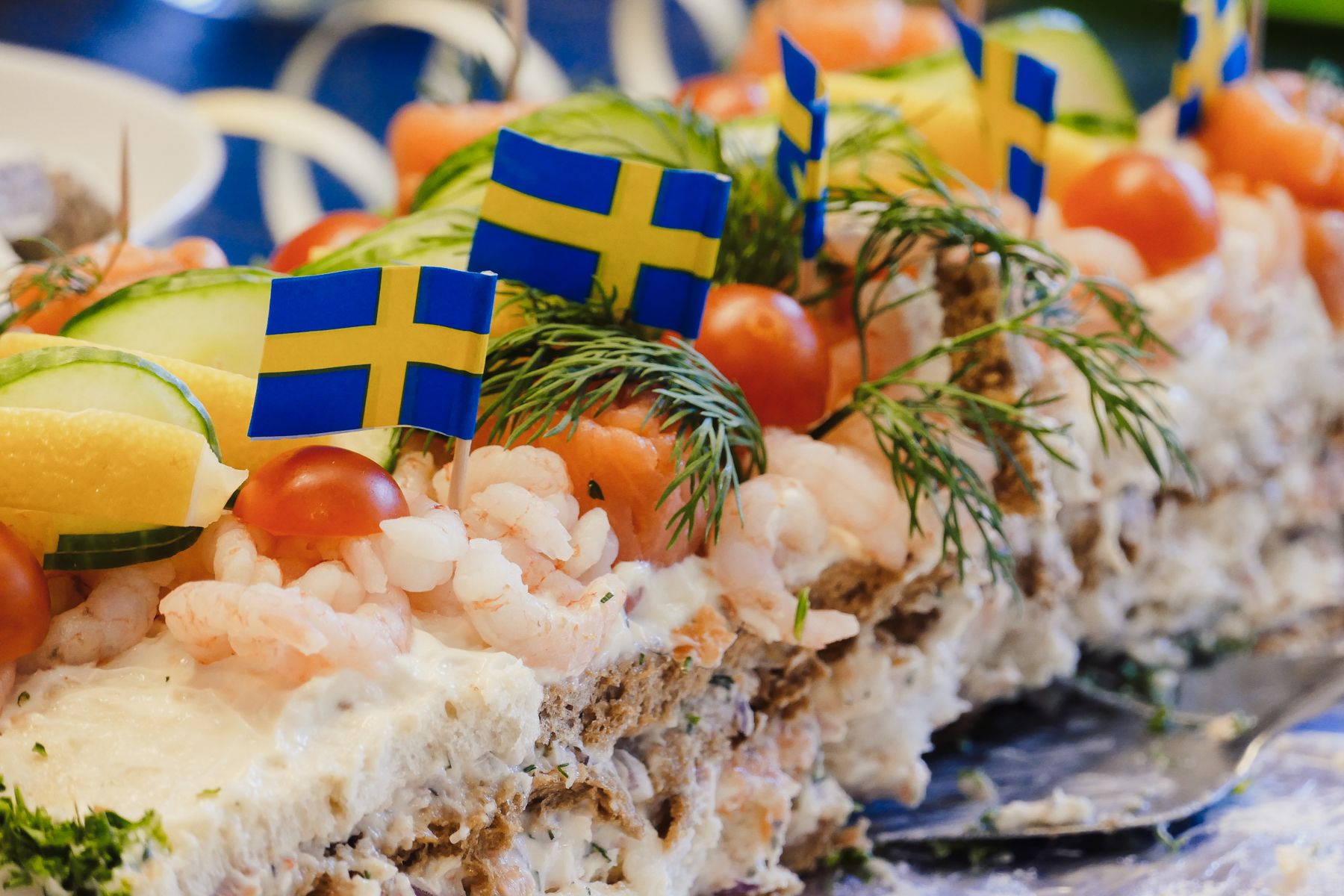
Kalles Kaviar
A blue and yellow tube filled with salted cod roe.
Think of it as the Swedish Vegemite: locals love it. For a taste, head to a local grocery store.


What should I eat in Stockholm or Malmö?
Aside from all of the traditional foods the above, if you’re visiting Stockholm or Malmö, there are a range of delicious dishes that deviate from traditional Swedish grub.
Falafel
Yes, you read that right. Malmö is renowned for their falafel. In fact, Lebanese communities in southern Sweden makes some of the best falafel in the world.
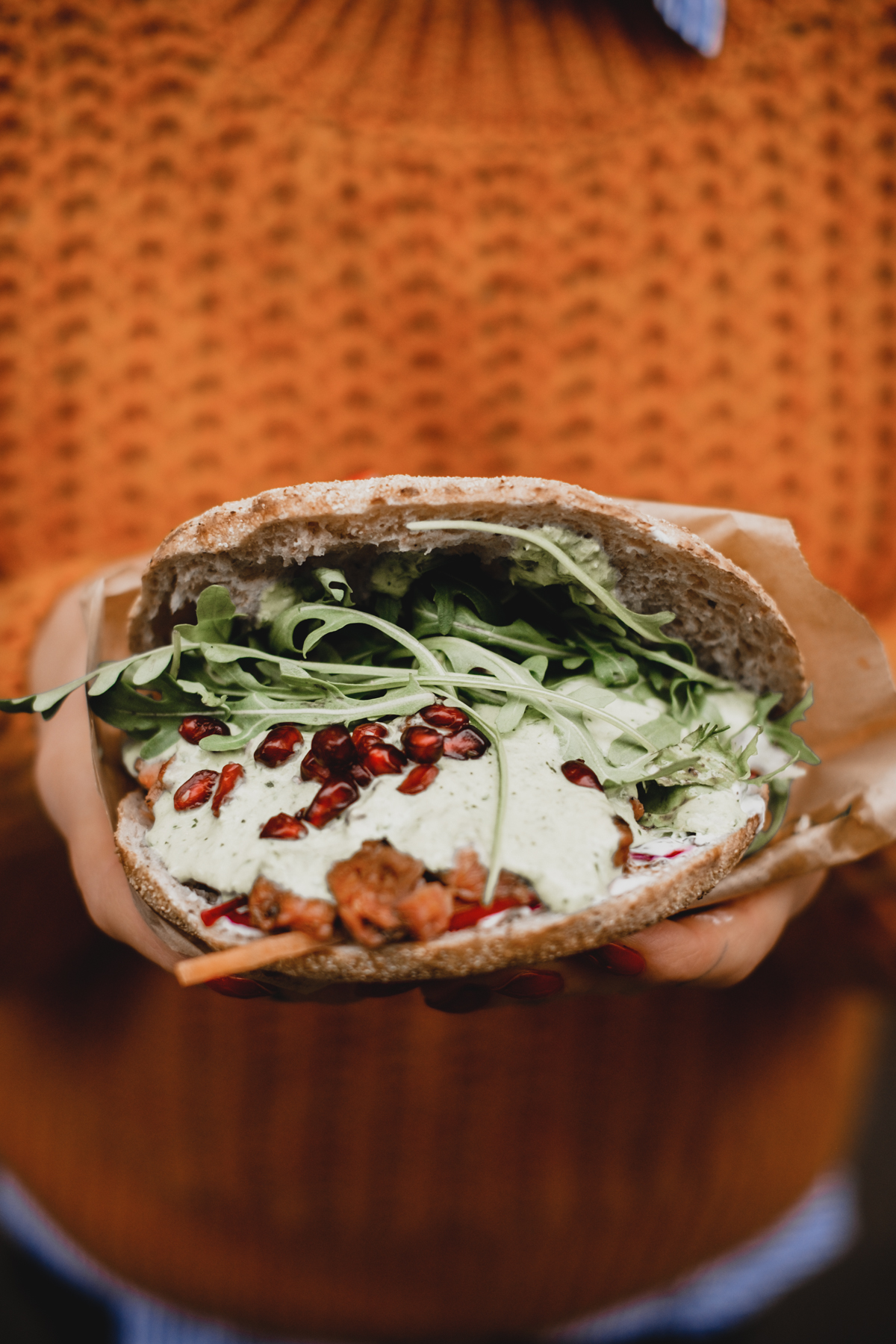 |
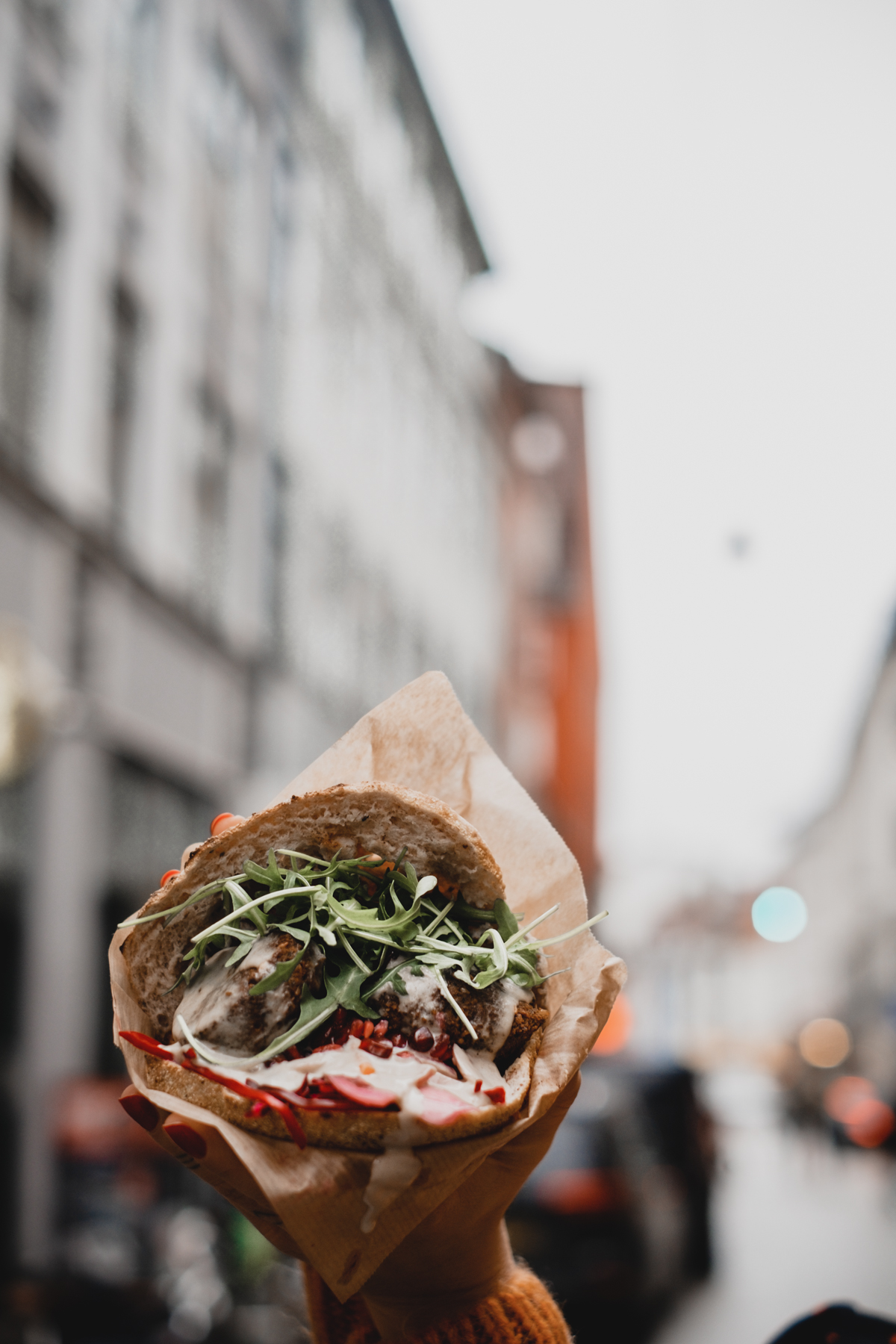 |
Kebab Pizza
Kebab on pizza doesn’t sound like a pairing that should work…but it does, and it’s really freakin’ good.
Turkish immigrants brought kebab to Sweden in the 1980s and thirty years later it has become the favorite pizza topping of Swedes.
A kebab pizza starts as a classic tomato-and-cheese pie with onions, pickled pepperoncini, thinly-sliced kebab meat, and its yogurty-white sauce. This Swedish invention is extremely popular in southern Sweden and is a hearty hangover cure.
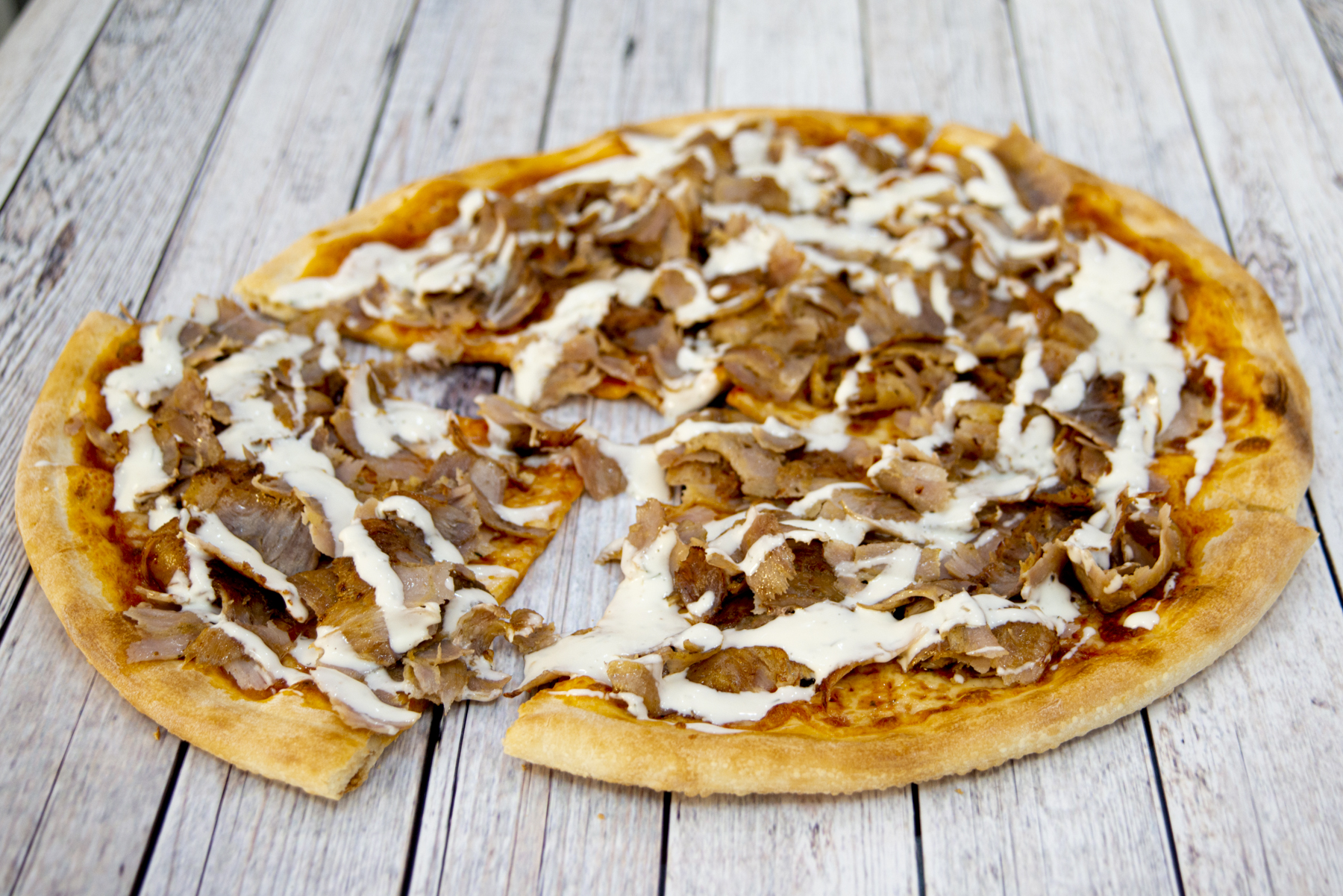
What is Fika?
Before we get into all the satisfying treats, let’s first talk about the Swedish custom of fika. The word fika loosely translates to a “coffee and cake break” but that hardly captures the social significance of the rite.
Fika is the Swedish ritual of slowing down, of being present, of taking a break to take stock of your day. It’s always social – fika is not something that you do by yourself – and involves a cup of coffee, or tea, and a little bite to eat.

That’s where pastries like cinnamon buns, cookies and cakes all come in; they’ve the buttery “glue” that holds a fika together.
Delicious Swedish desserts and sweets
Kanelbulle
No trip to Sweden would be complete without a cinnamon bun; after all, Sweden is considered its culinary home.
The kanelbulle was created in the early-1900s but, as a result of war rations, was actually too expensive for most Swedes to eat. So, cinnamon buns didn’t enter the national psyche until the 1950s, when sugar prices went down and home baking went up.
Today, the kanelbulle is the unofficial symbol of fika and is celebrated nationally on October 4th, Kanelbullens Dag (Cinnamon Bun Day).

Punschrulle
Like most Scandinavians, Swedes love their marzipan and the queen of all almond desserts is the brightly colored punschrulle. A “Punsch-roll” is a cylindrical pastry about the size of Bounty bar, covered in green marzipan and dipped in chocolate at each end. It’s dense.
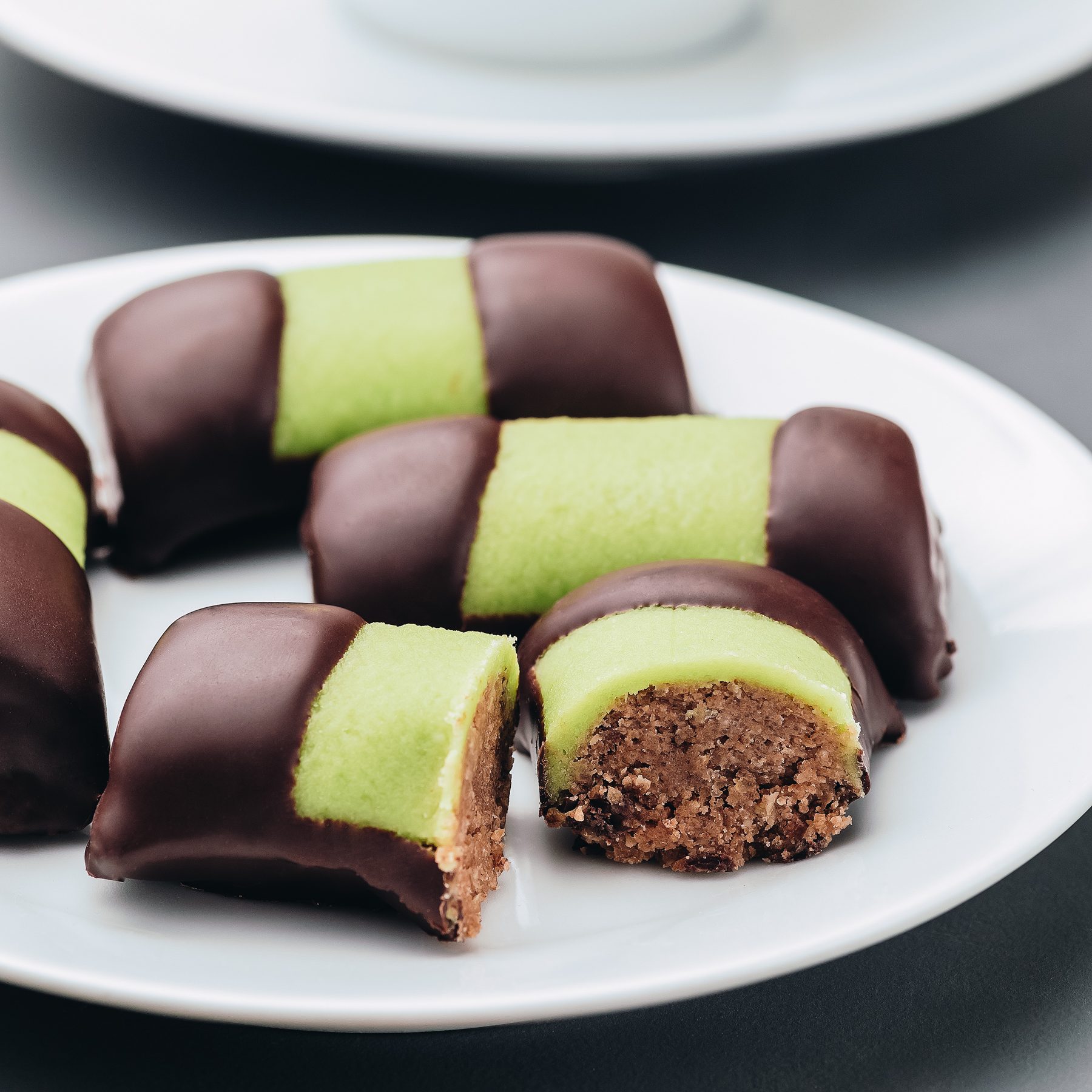 |
 |
The insides used to be filled with leftover cakes (similar to the Danish træstammer and rumkugler) that had been soaked in a spiced arrack-liqueur called Punsch (more on that alcoholic beverage in a bit).
Swedish bakeries will have them, as will many grocery stores. Sometimes they’re called dammsugare (vacuum cleaner) because their shape is reminiscent of a vintage cleaning appliance.
Spettekaka
Spettekaka (spit cake) is a meringue-like cake from Skåne, Sweden’s southernmost region, that dates back to the 1600s.
The cake is made by layering a sweet mixture of eggs and potato starch over a conical form while it rotates over an open oven. A spettekaka takes anywhere from six to eight hours to create. It is a traditional Swedish specialty protected by the European Union.

Kardemummabullar
Swedish kardemummabullar are so good that bakers rarely tinker with the recipe – even in Denmark, which is saying a lot, given the sibling rivalry.
Cardamom buns are similar to cinnamon rolls except that they’re smaller, knotted, and baked with lots of the aromatic spice.
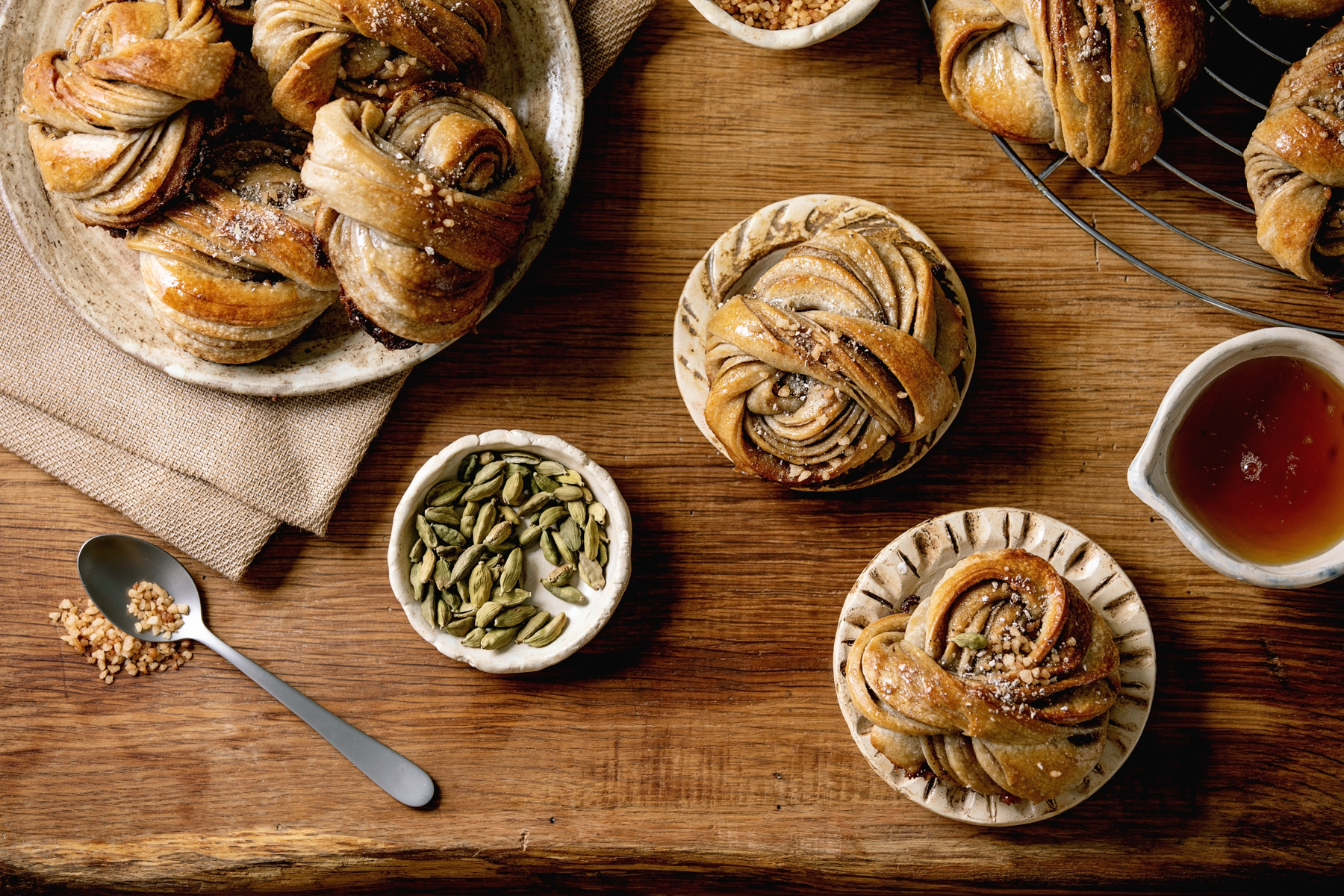
Kladdkaka
Another fika favorite, kladdkaka is a chocolate cake covered with powdered sugar, berries, and whipped cream. It lies somewhere between a brownie and a gooey lava cake.
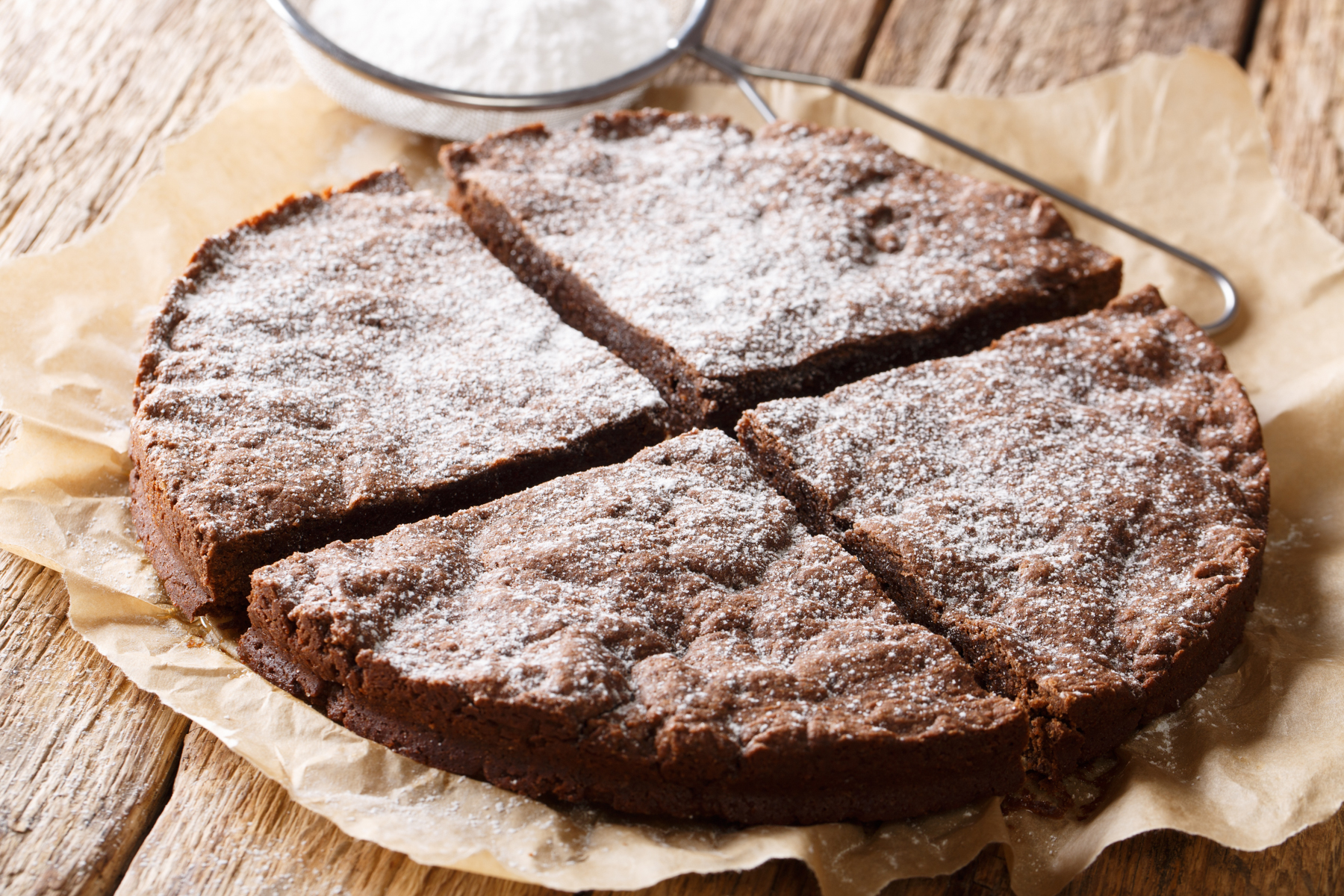
Ostkaka
The Swedish version of a cheesecake. Ostkaka is served at room temperature with jam and cream.
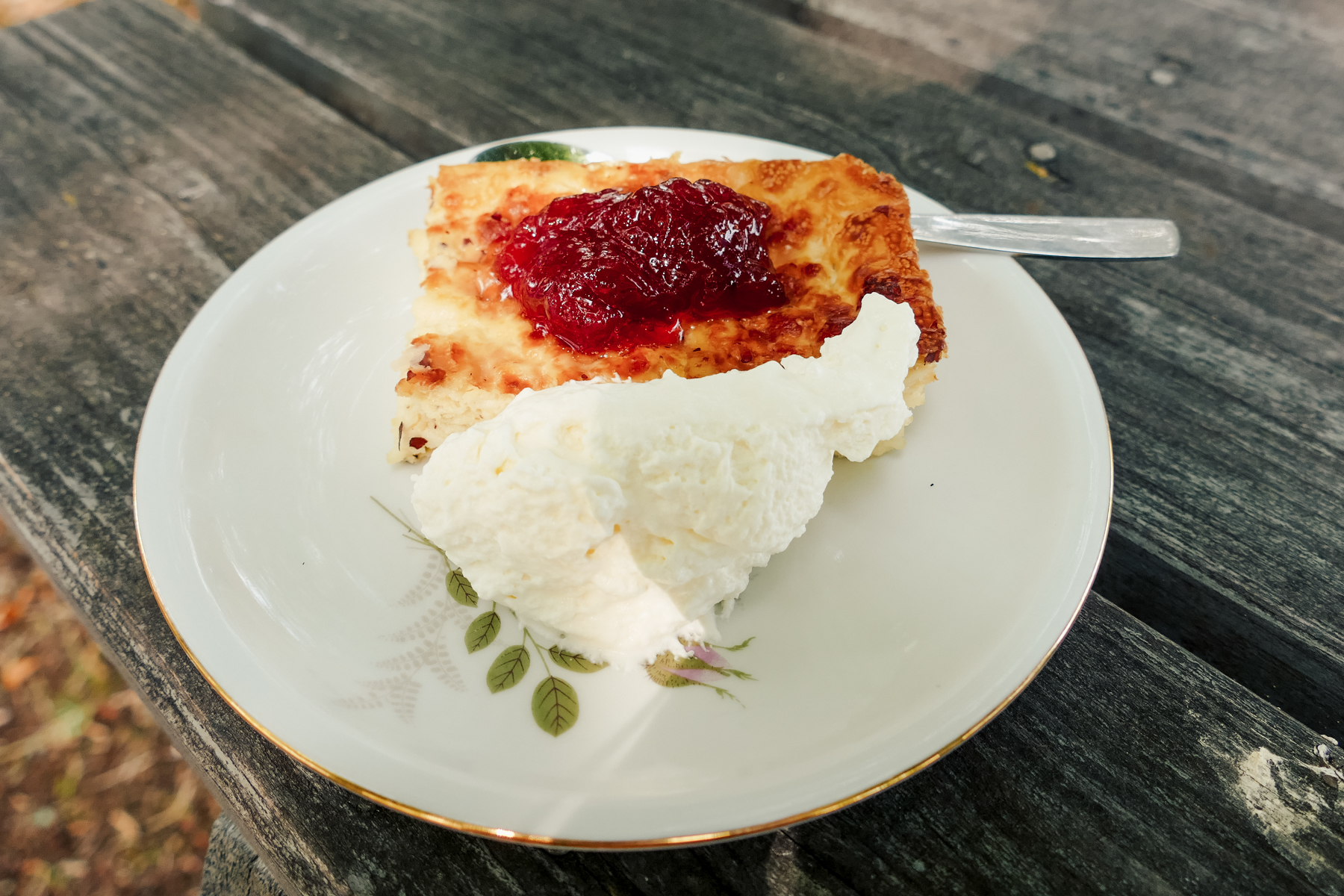
Prinsesstårta
Another colored marzipan confection, a “princess tart” is a layer cake covered with green marzipan. Jam and whipped cream are always among the layered fillings. Prinsesstårta are reserved for birthdays and other celebrations.
Alghrens Bilar
Alghrens Bilar is a marshmallow-like candy from the 1950s that is affectionately known as “Sweden’s best car.”
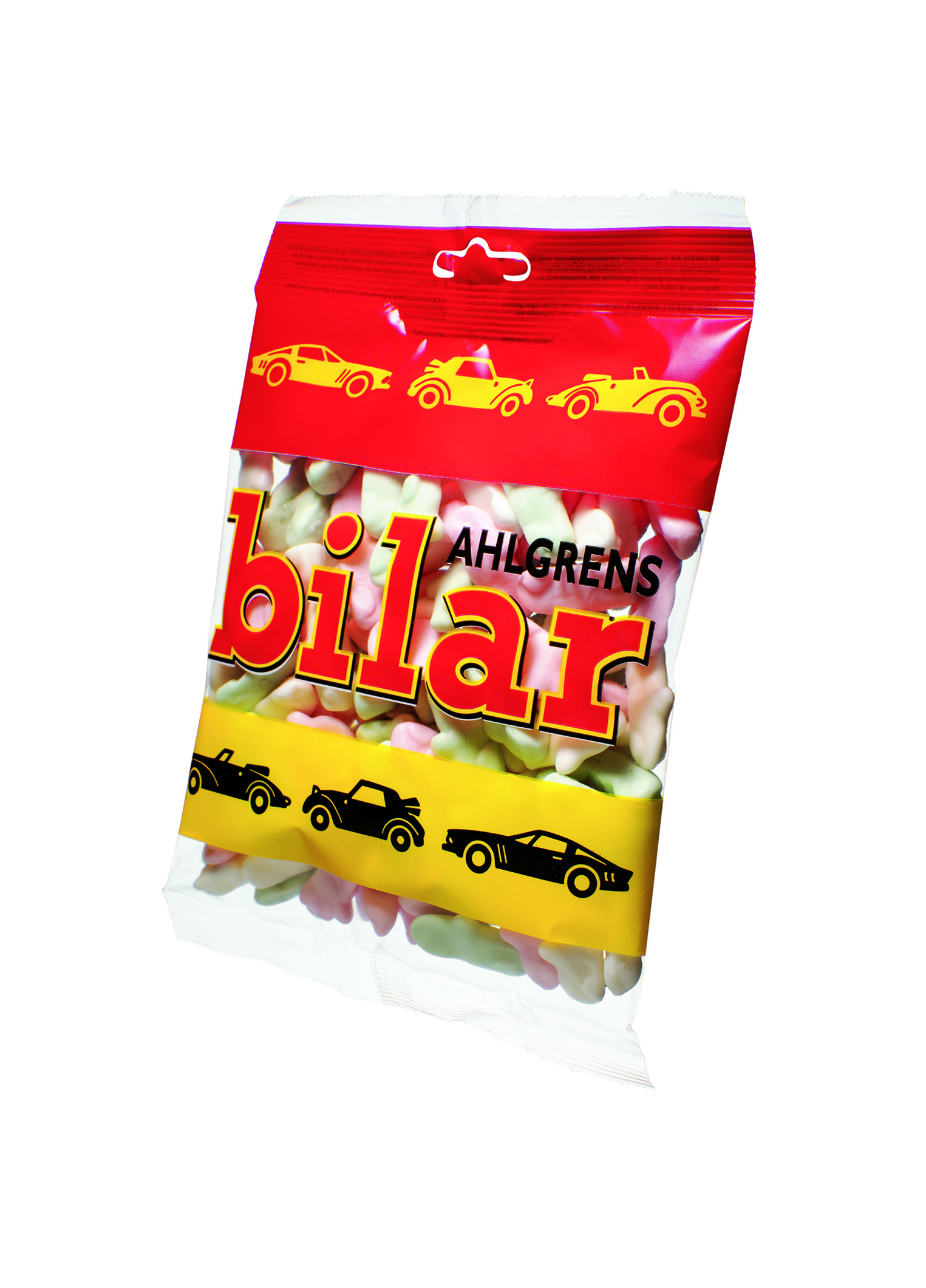 |
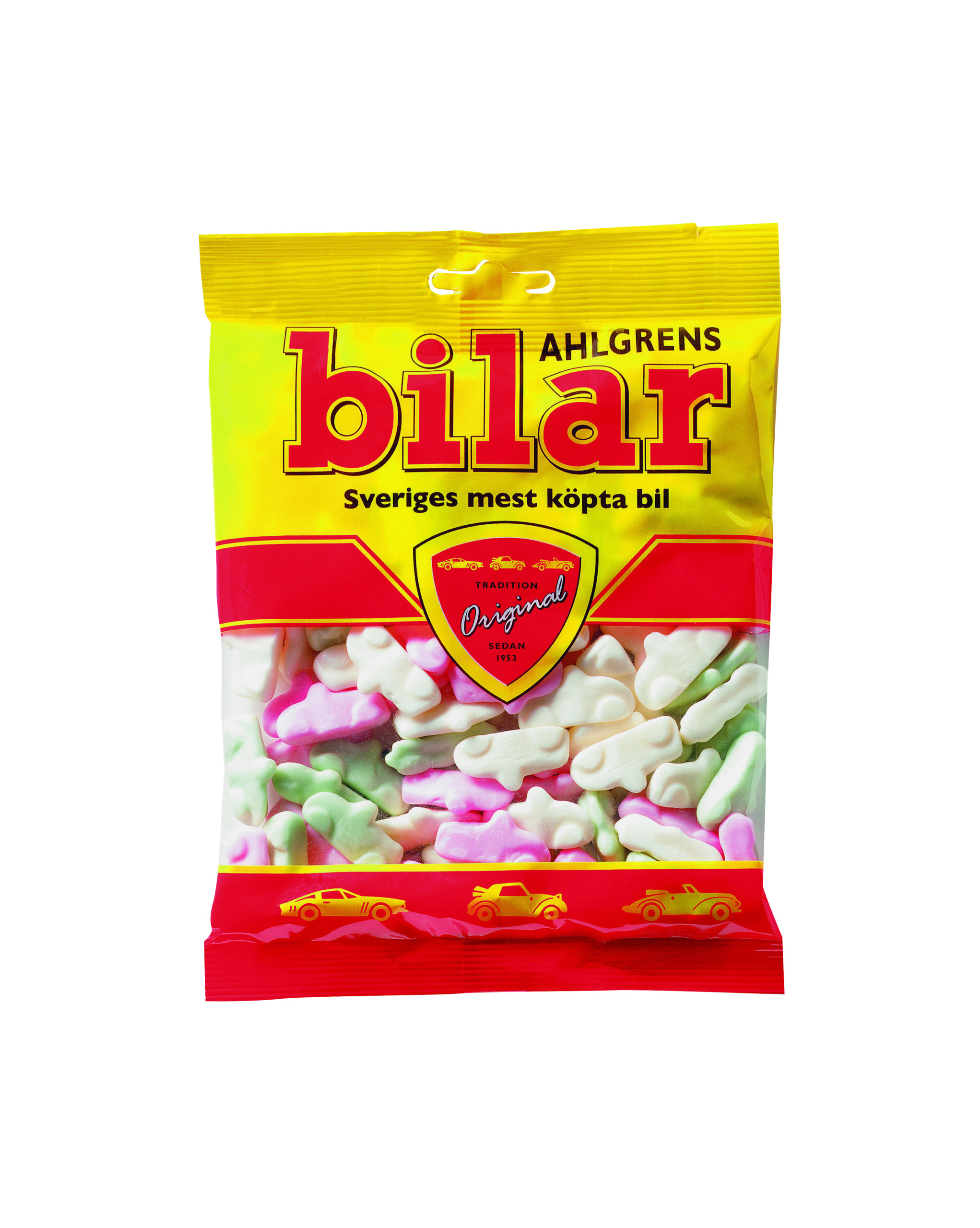 |
What do the Swedes eat for breakfast?
Gröt
A common dish on the Swedish breakfast table is gröt (porridge) or, more specifically, havregrynsgröt (oatmeal porridge). It’s filling, healthy, and easy to make.
Swedes usually add milk and top theirs with various berries.
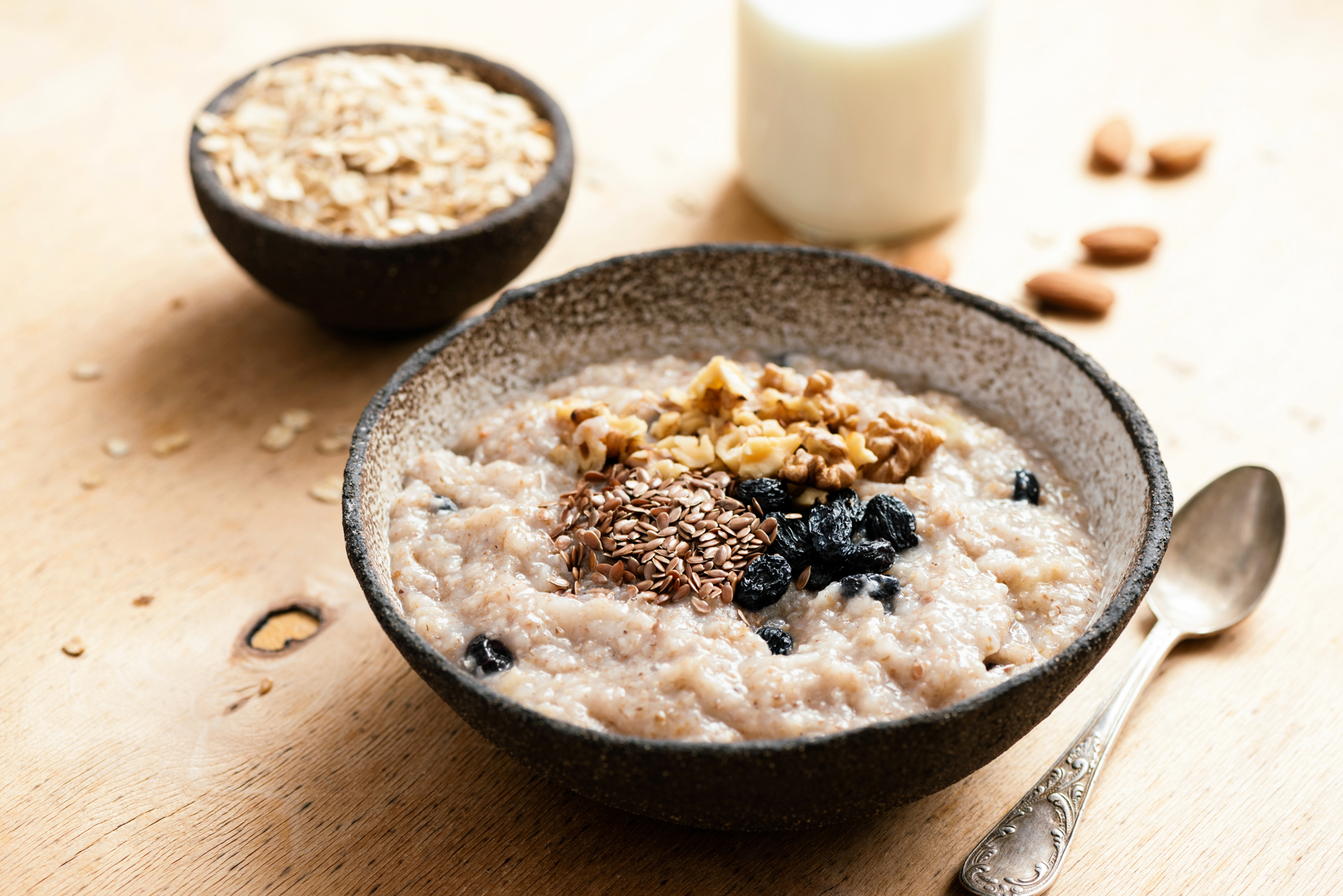
Bröd och Bullar
You’ll find all types of breads (bröd) and rolls (bullar) available for breakfast in Sweden, from hard knäckebröd to sourdoughs and buttermilk buns.
Toppings include butter and cheese (smör och ost), cold cuts (pålägg), jam, or chocolate.
Filmjölk
Filmjölk is a milk product that’s been a popular in Sweden for decades. It’s made by fermenting cow’s milk with various bacteria. The bacteria give the milk a thick kefir-like consistency, a tangy taste, and makes it easier to tolerate for those who are lactose sensitive.
Swedes prepare it with museli (like yogurt) or with cereal (like regular milk) for breakfast. You can find filmjölk plain or flavored with fruits like blueberries or strawberries.
What do Swedes drink?
Punsch
Punsch became a part of Sweden’s drinking culture after merchants brought arrack back from Southeast Asia in 1733. The Swedish liqueur is a blend of sugar, spices and Batavia Arrack – an Indonesian spirit made from sugar cane and red rice.
Punsch is a versatile, sweet yet spicy drink. Do like the Swedes and enjoy it with a bowl of Thursday’s yellow pea soup (ärtsoppa).
Blåbärssoppa
A food that happily blurs the lines between meal categories, blåbärssoppa (or ‘bilberry soup’) is blended sugar, potato starch, and European blueberries.
It’s served as a cold dessert in summer or a warm soup in winter. It is the (un)official beverage of Vasaloppet – the oldest cross-country ski race in the world.
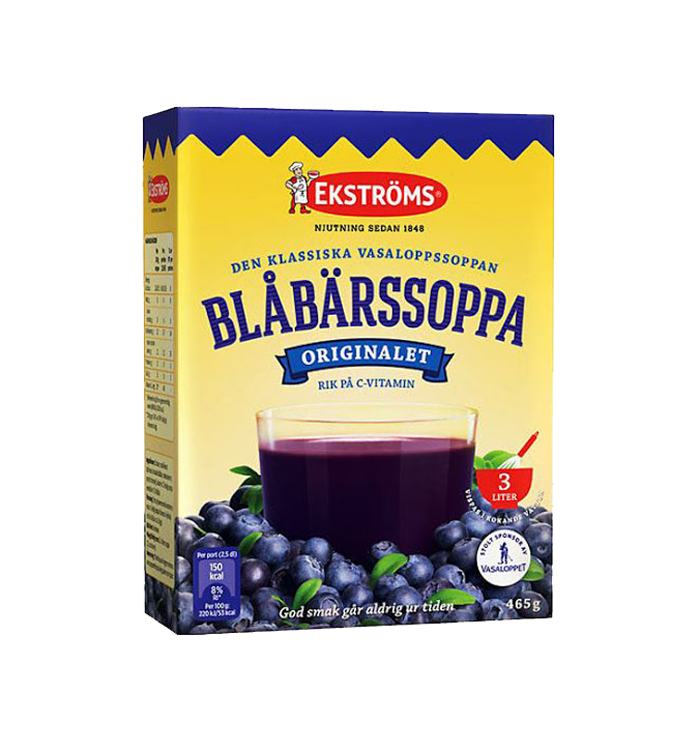
Troca
Trocadero, also known as Troca, is a caffeinated soft drink that has remained relatively unchanged since it was bottled in 1953. It’s an orange-apple soda and incredibly popular, especially in northern Sweden where it’s hailed as the region’s national beverage.
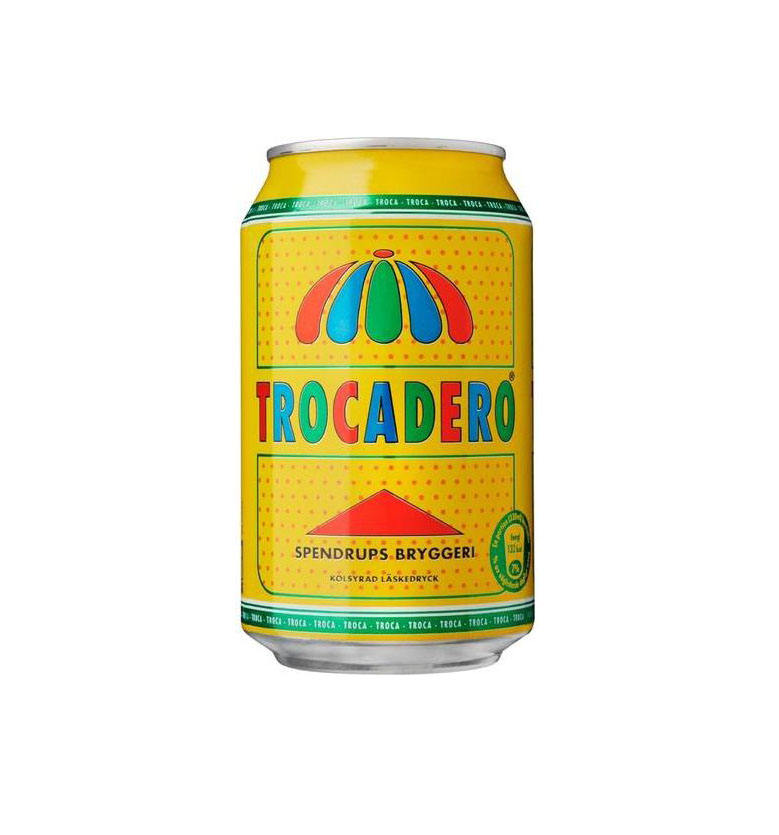
Snaps (Aquavit)
Snaps, also known as aquavit, is one of those drinks no one seems to like yet can’t get enough of during holidays and other special gatherings. In Sweden, snaps is a small pour of flavored brännvin – a strong spirit distilled from potatoes or grains.
You can’t attend a birthday or crayfish party without sipping (at least) one glass or belting out a few snapsvisa, traditional drinking songs.
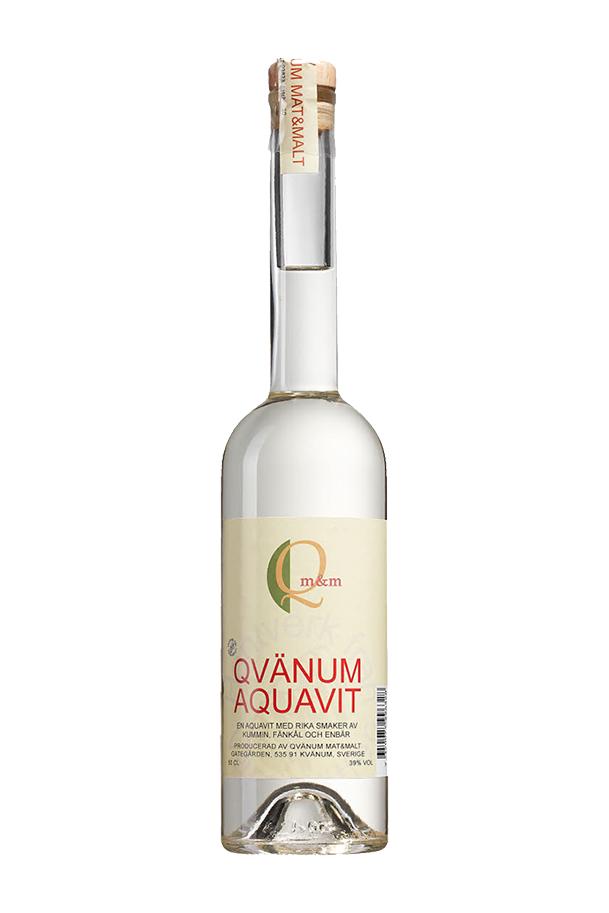 |
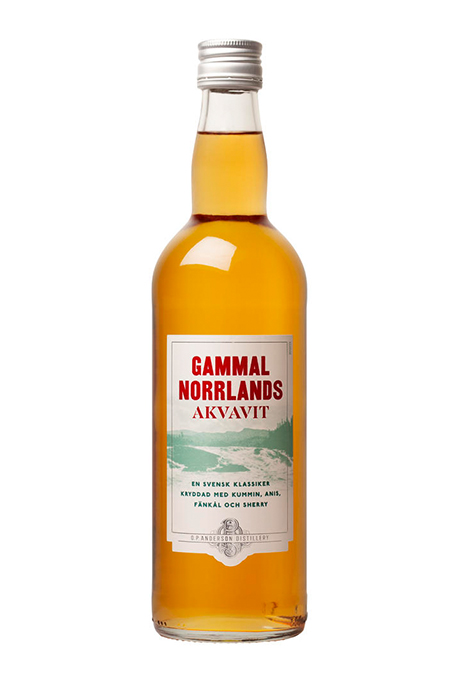 |
Coffee
Like all good Scandinavians, Swedes love their coffee; they’re among the highest consumers of the stuff after Finland, Norway, Iceland, Denmark, and the Netherlands.
Coffee drinking in Sweden has been cultivated around the Swedish custom of fika, and has also given rise to a huge range of micro-roasters and coffee shops in cities across the country.

Cider
Perhaps more popular among pub-goers outside of Sweden, these carbonated apple beverages have low or no alcohol. Swedish ciders are known for their range of fruit flavors which include local berries like smultron (strawberry) and lingon (lingonberry).
 |
 |
Lingondricka
Lingondricka is lingonberry juice with sugar and water. Add vodka to it and you’ve got yourself a Swedish “wolf paw” (vargtass).
What is the New Nordic Movement?
The “New Nordic Kitchen” is a culinary and cultural movement that started in Scandinavia over 20 years ago. It emphasizes the use of local, seasonal ingredients and traditional, Nordic methods of food preparation. Purity, freshness, and simplicity are cross-cutting tenets, as are ethics and cooperation.
In 2004, the “New Nordic Manifesto” was created to outline the guiding principles of the movement. Danish chef and restauranteur, Claus Meyer, was the driving force behind the project that included the prominent Swedish, Michelin-star chef Mathias Dahlgren.
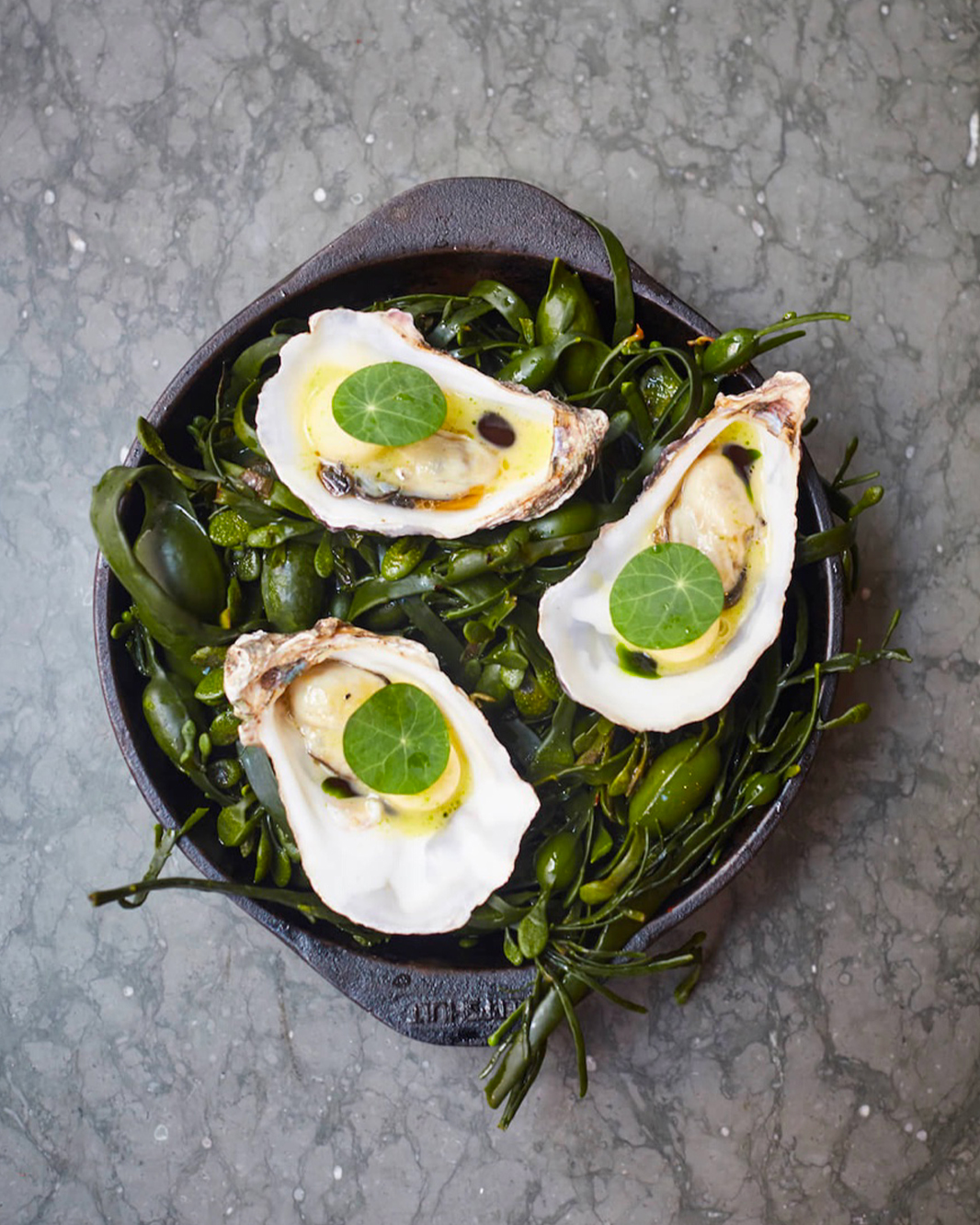 |
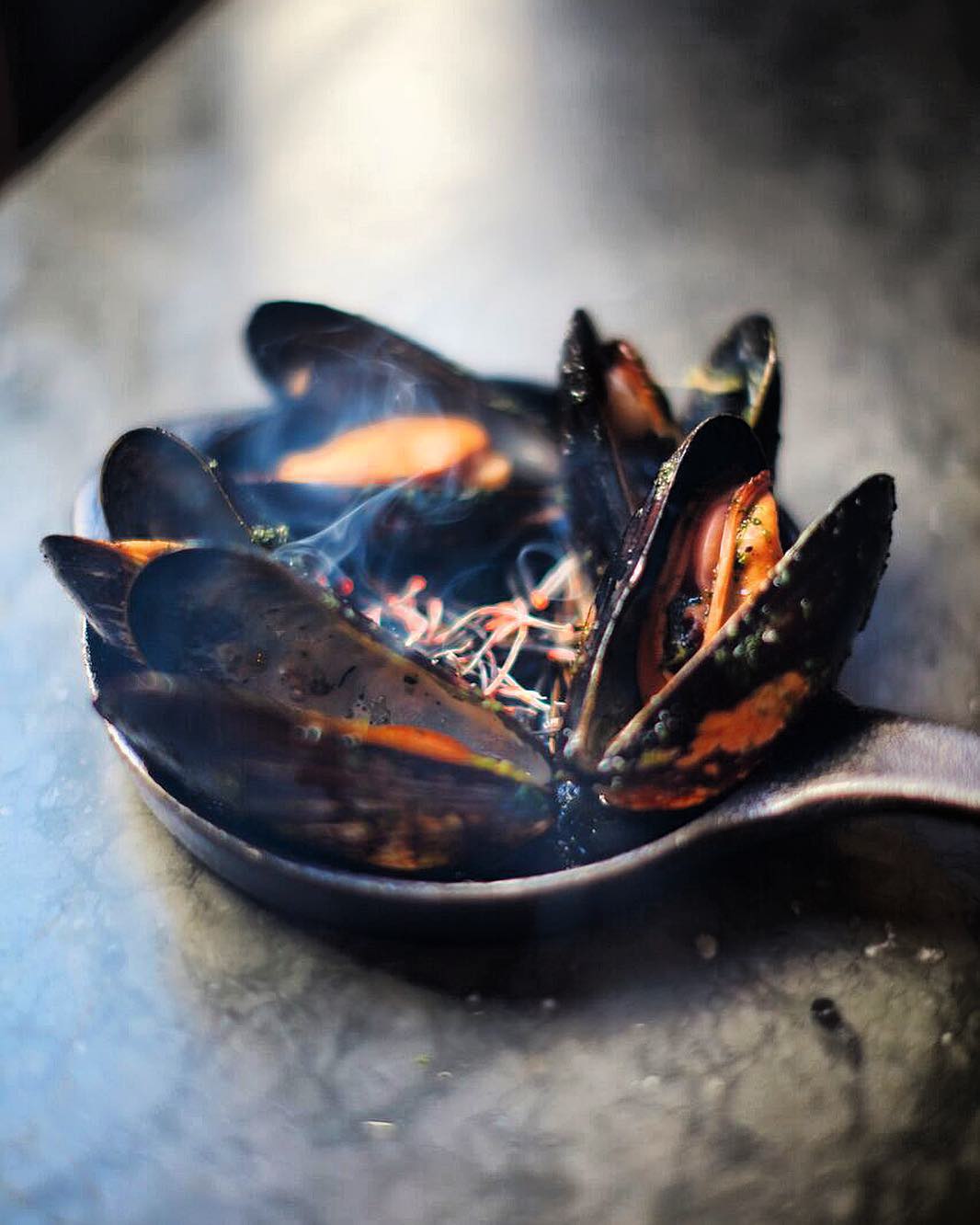 |
Above: Restaurant EKSTEDT
Read more |
|
Traditional Sweden holiday foods
Sweden has quite a number of holiday traditions that include baking, frying or boiling something delicious. Here are some of the country’s treasured holiday foods.
Fettisdag (“Fat Tuesday” or Shrove Tuesday)
What do Christian Swedes do before a period of fasting and reflection? Eat their weight in cream-filled cardamom buns, of course!
A semla bun is a soft roll that’s been hollowed and had its top removed, filled with almond paste and whipped cream, then re-topped and dusted with sugar. Originally, they were only eaten on “Fat Tuesday” (the day before the Lent fast) but now they can be found in bakeries from end of January through Easter.
Swedish holiday |
Fettisdag (“Fat Tuesday” or Shrove Tuesday) |
When |
Fettisdag is the day before Ash Wednesday but semlor (the plural of semla) are available beginning in late January until Easter. |
Swedish Easter
In Sweden, Easter Sunday is celebrated over a long lunch that typically includes smörgåsbord dishes like herring, knäckebröd and cheese. Lamb, eggs and salmon are also heavily featured during the holiday, although this can change from region to region.

Påskmust, a non-alcoholic malt drink, is sold for a limited time all over the country. It’s actually a rebranded Julmust – the beloved Christmas beverage.
Swedish holiday |
Easter |
When do Swedes celebrate? |
The exact date can get tricky as it involves the moon, spring equinox, and a church decree. As a general rule, Easter always falls between 22 March and 25 April. |
Midsommar (Midsummer)
Midsummer is an important holiday on the Swedish calendar, right up there with Christmas, and is rooted in Sweden’s agrarian past.
The outdoor festivities involve flower crowns, dances, a maypole and, of course, traditional foods like pickled herring, new potatoes and the first strawberries of season.
Swedish holiday |
Midsommar (Midsummer) |
When do Swedes celebrate? |
Midsummer is celebrated on Midsummer’s Eve (the night before the longest day of the year) which takes place on a Friday between 19 and 25 June. |
Mårtensafton (St. Martins Eve)
St. Martin’s Day recognizes the death of Martin of Tours, a bishop and the patron saint of soldiers and the poor.
On the evening before his death, much of Europe eats a stuffed goose in his honor. Why? Because a gaggle of geese revealed Martin hiding to avoid becoming a bishop.
Swedes go all in, using each and every part of the goose. They prepare a roasted goose and a “black soup” (svartsoppa) starter made from the blood and entrails.
Swedish holiday |
Mårtensafton (St. Martins Eve) |
When do Swedes celebrate? |
November 10th |
Luciadag (Saint Lucy’s Day)
In mid-December, on the shortest day in the medieval Julian calendar, Swedes get up early to celebrate Saint Lucy’s Day (Luciadag).
Saint Lucia, known in English as Saint Lucy, was a Sicilian saint who became a Christian martyr when she refused to denounce her faith, despite being tortured and set on fire. Swedes across the country commemorate this day with a candlelit procession and eat sweet saffron buns called lussekatter, ginger snaps and mulled wine (glögg).
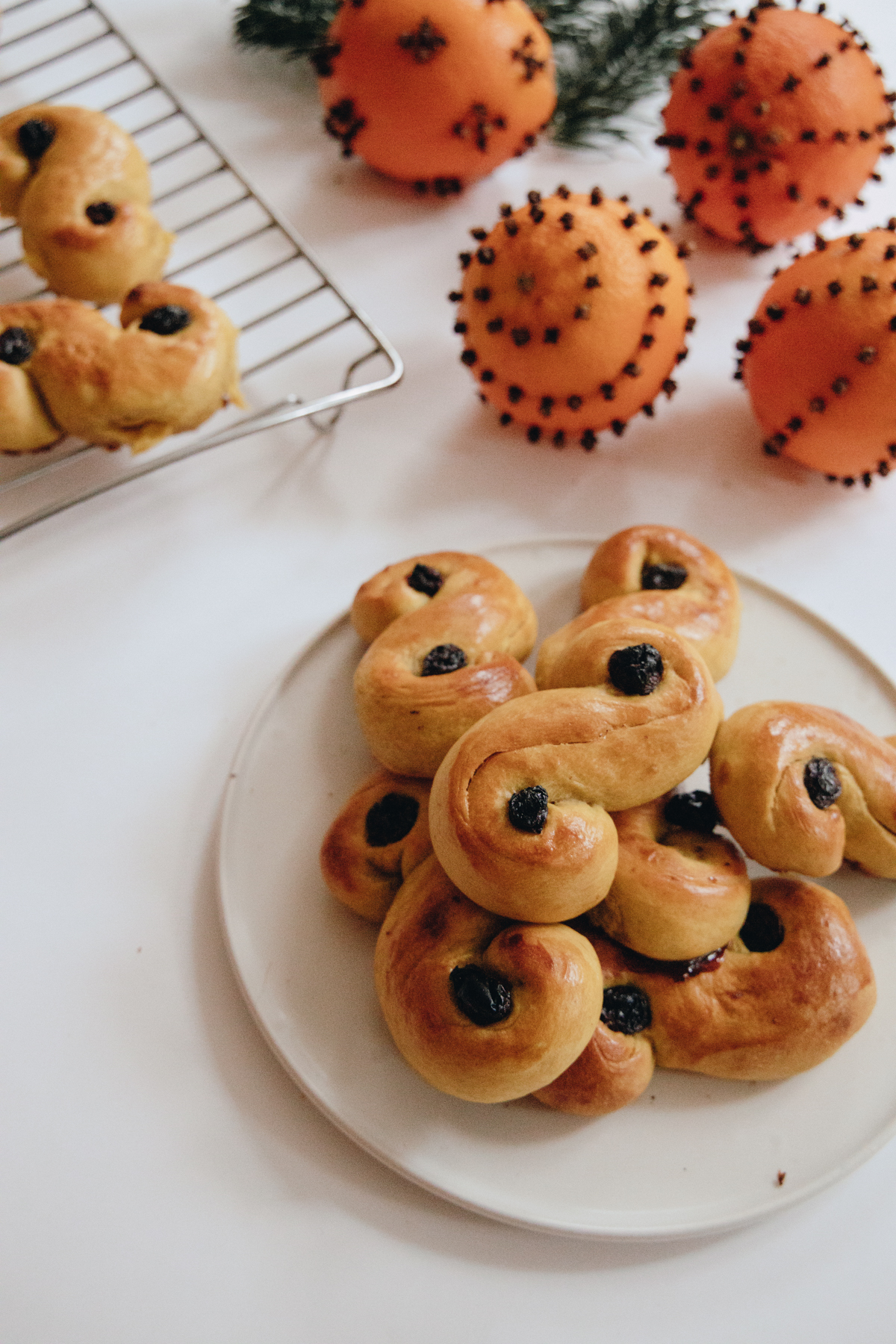 |
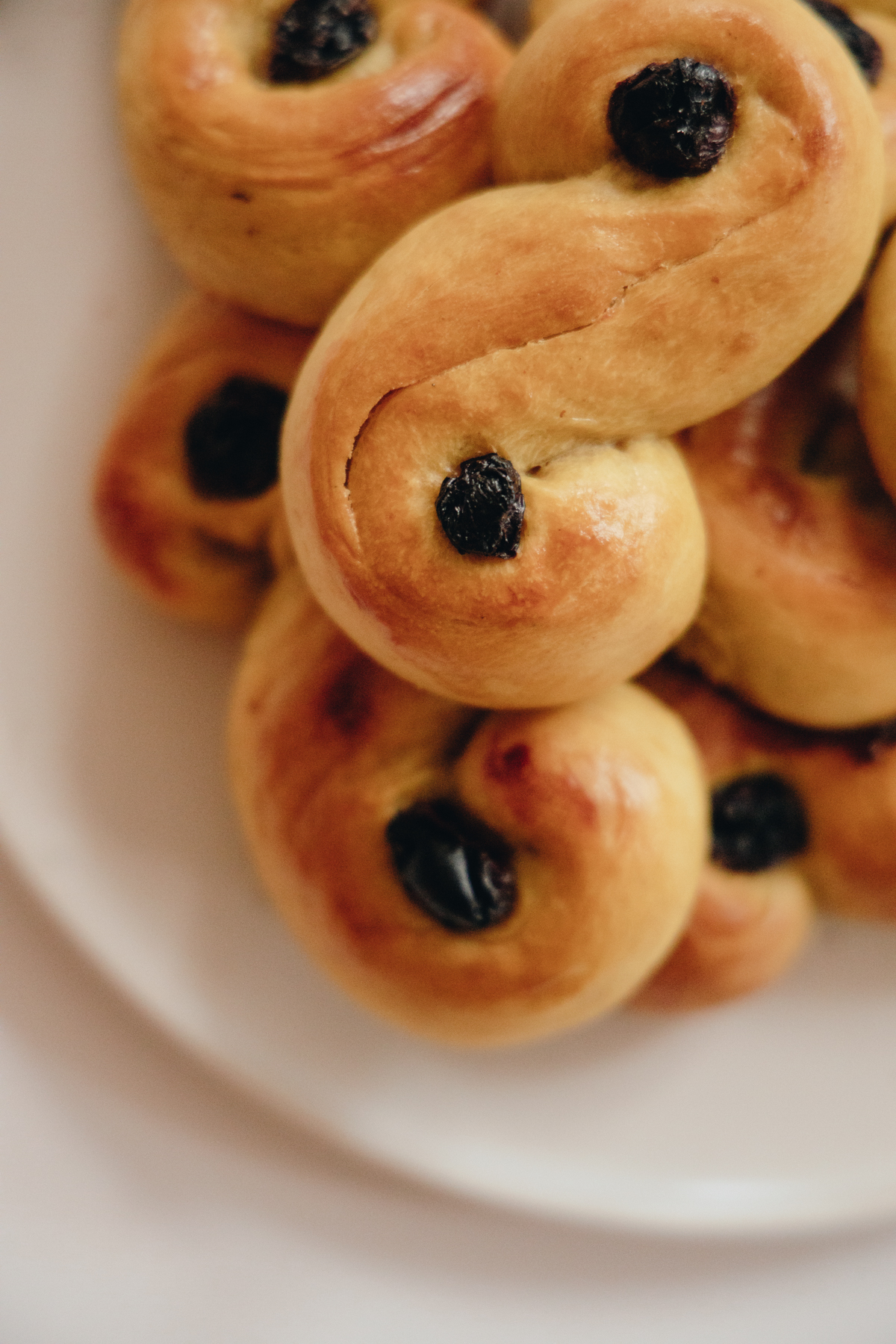 |
Swedish holiday |
Luciadag (Saint Lucy’s Day) |
When do Swedes celebrate? |
December 13th |
Första Advent (Advent Sunday)
Across the Nordics, Advent Sunday marks the beginning of the Christmas season and families use this day to decorate, drink glögg and eat pepparkakor (ginger snaps).
Swedes will also light the first of four candles in the advent wreath (adventsljusstake).
Swedish holiday |
Första Advent (Advent Sunday) |
When do Swedes celebrate? |
The fourth Sunday before Christmas |

Jul (Swedish Christmas)
Swedish Christmas is celebrated on Christmas Eve (December 24th) over a large spread called a Julebord (Christmas table). Pork dishes such as sausages, meatballs, and a roast tend to dominate the meal, along with herrings, potatoes, cabbage, and other preserved fare.
Jansson’s temptation, or Janssons frestelse, is another popular Christmas choice. It’s a gratin-style casserole with potatoes, onions, and European sprat.
Lastly, no Swedish Christmas meal would be complete with risgrynsgröt, a rice porridge slow-cooked with milk and cinnamon. One almond is hidden in the entire pot, and it is believed that whomever finds it will get married in the coming year.
Swedish holiday |
Jul (Swedish Christmas) |
When do Swedes celebrate? |
December 24th |
Traditional and New Nordic Swedish Cookbooks
Looking to try your hand at some Swedish cooking? Then give these essential cookbooks a read.
Fika: The Art of the Swedish Coffee Break by Anna Brones and Johanna Kindvall
In their cookbook, Anna Brones and Johanna Kindvall take the reader through the Swedish custom of fika, alongside 50 delightfully illustrated recipes.
Learn about Swedish coffee culture, the basics of a Swedish pantry, and how to create the perfect fika moment at home.
Fika: The Art of the Swedish Coffee Break by Anna Brones and Johanna Kindvall
The Little Swedish Kitchen by Rachel Khoo
Written by British chef, Rachel Khoo, as a “love letter” to her adoptive home, the Little Swedish Kitchen is thoughtful, beautiful, and easy to use.
The cookbook includes 100 classic Swedish recipes divided by the seasons, along with pro tips and personal anecdotes.
The Little Swedish Kitchen by Rachel Khoo
Lagom: The Swedish Art of Eating Harmoniously by Steffi Knowles-Dellner
Channeling the Swedish concept of lagom (“lah-gom”), meaning “just the right amount” in Swedish, The Swedish Art of Eating Harmoniously offers a peek into modern Swedish living.
With gluten-free recipes like savory buckwheat pancakes and minimalist photos, this cookbook will inspire you to embrace just the right amount of indulgence.
Lagom: The Swedish Art of Eating Harmoniously by Steffi Knowles-Dellner
The Nordic Cookbook by Magnus Nilsson
Complied by Magnus Nilsson, the Swedish chef behind the (now closed) Michelin-starred restaurant Fäviken Magasinet, The Nordic Cookbook is a compendium of 700 recipes from across the region.
It’s big, ambitious, and has stunning photography of Nordic landscapes. Dishes run from the traditional and well-known to the unusual and obscure.
The Nordic Cookbook by Magnus Nilsson
Tina Nordström’s Scandinavian Cooking: Simple Recipes for Home-Style Scandinavian Cuisine by by Tina Nordström
The sixth cookbook from Sweden’s first female celebrity chef, Tina Nordström, Scandinavian Cooking is just like Tina: charming and fun.
The book is full of stories from Tina’s childhood in southern Sweden and boasts over 200 modern Swedish recipes.
Tina Nordström’s Scandinavian Cooking: Simple Recipes for Home-Style Scandinavian Cuisine by by Tina Nordström
Fäviken by Magnus Nilsson
Fäviken is an intimate look into one of the world’s most innovative restaurants through the eyes of its head chef, Magnus Nilsson. The book may be more suitable for the coffee table than the kitchen, but it does include a handful of New Nordic recipes to test out.
Fäviken by Magnus Nilsson
Man Tager Vad Man Haver (‘You Take What You Have’) by Jan-Öjvind Swahn
This 50-year-old cookbook was written by the late anthropologist Jan-Öjvind Swahn and is only available for purchase in a pre-owned state. It recounts the recipes of Cajsa Warg, one of Sweden’s best-known cooks and prolific author from the 1700s.
Man Tager Vad Man Haver (‘You Take What You Have’) by Jan-Öjvind Swahn
Find out more about Scandinavian foods with our guide to Danish food and Norwegian food.

